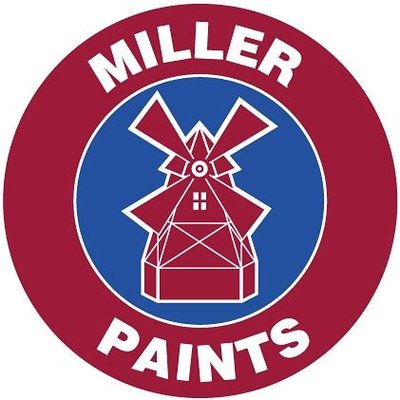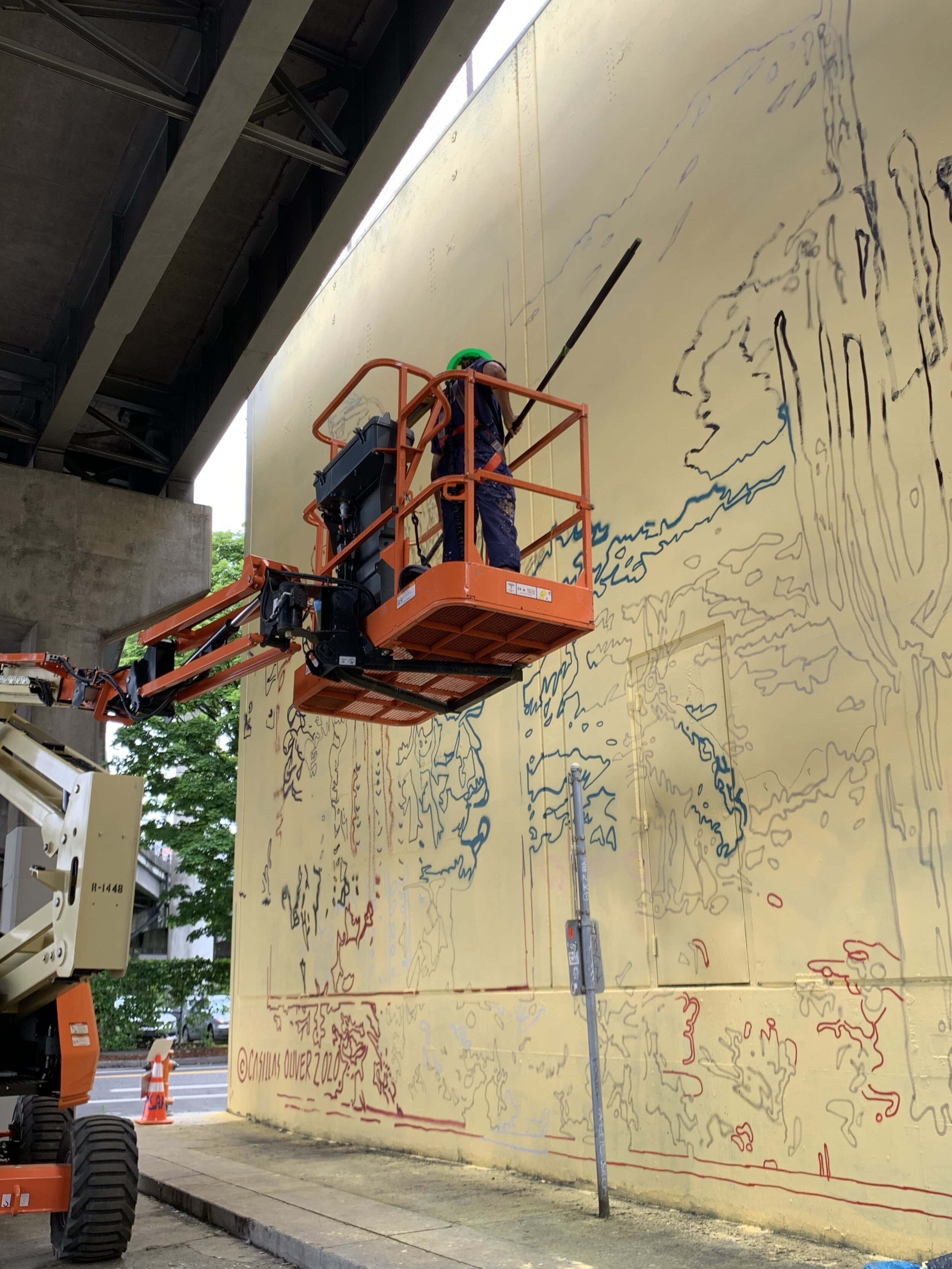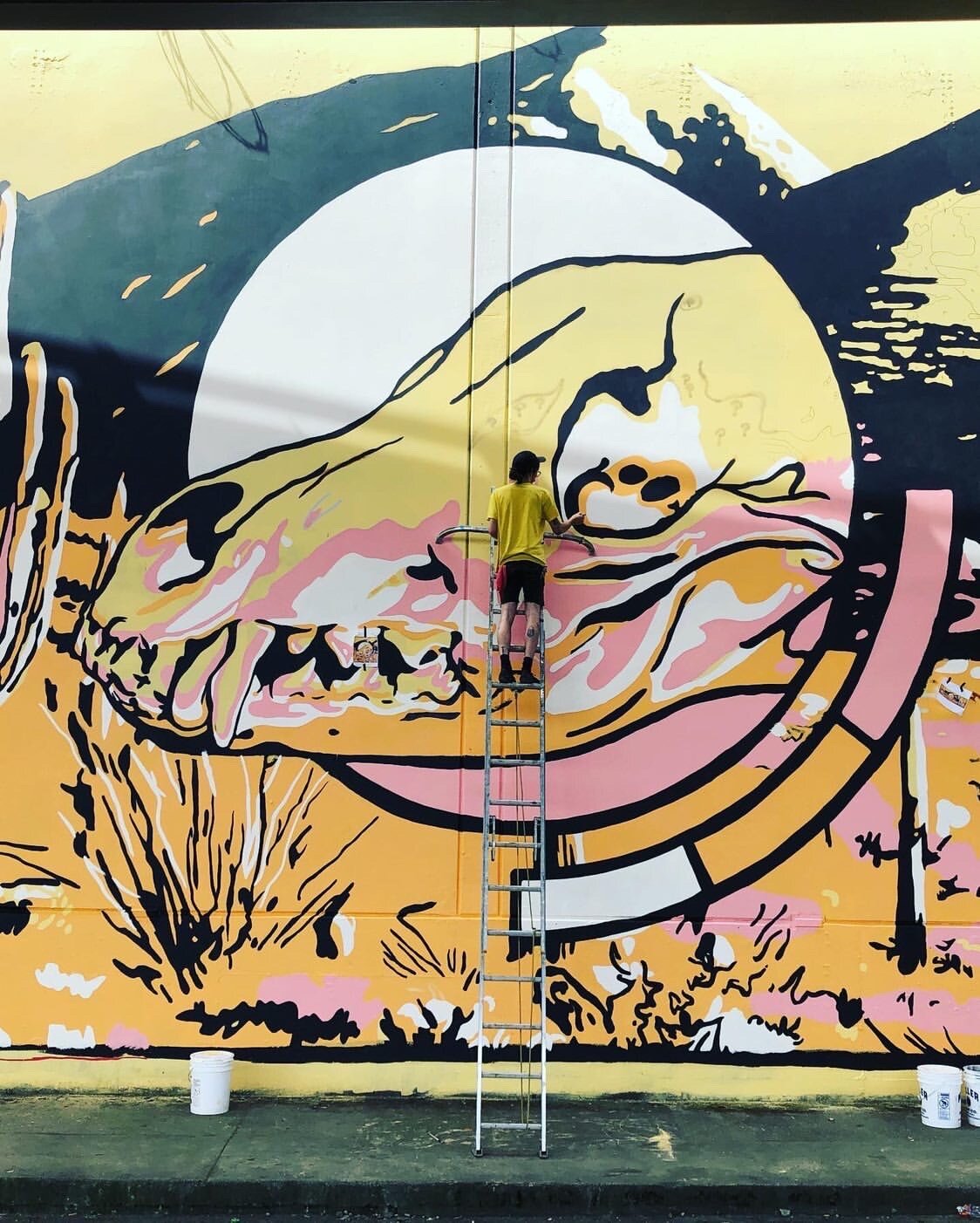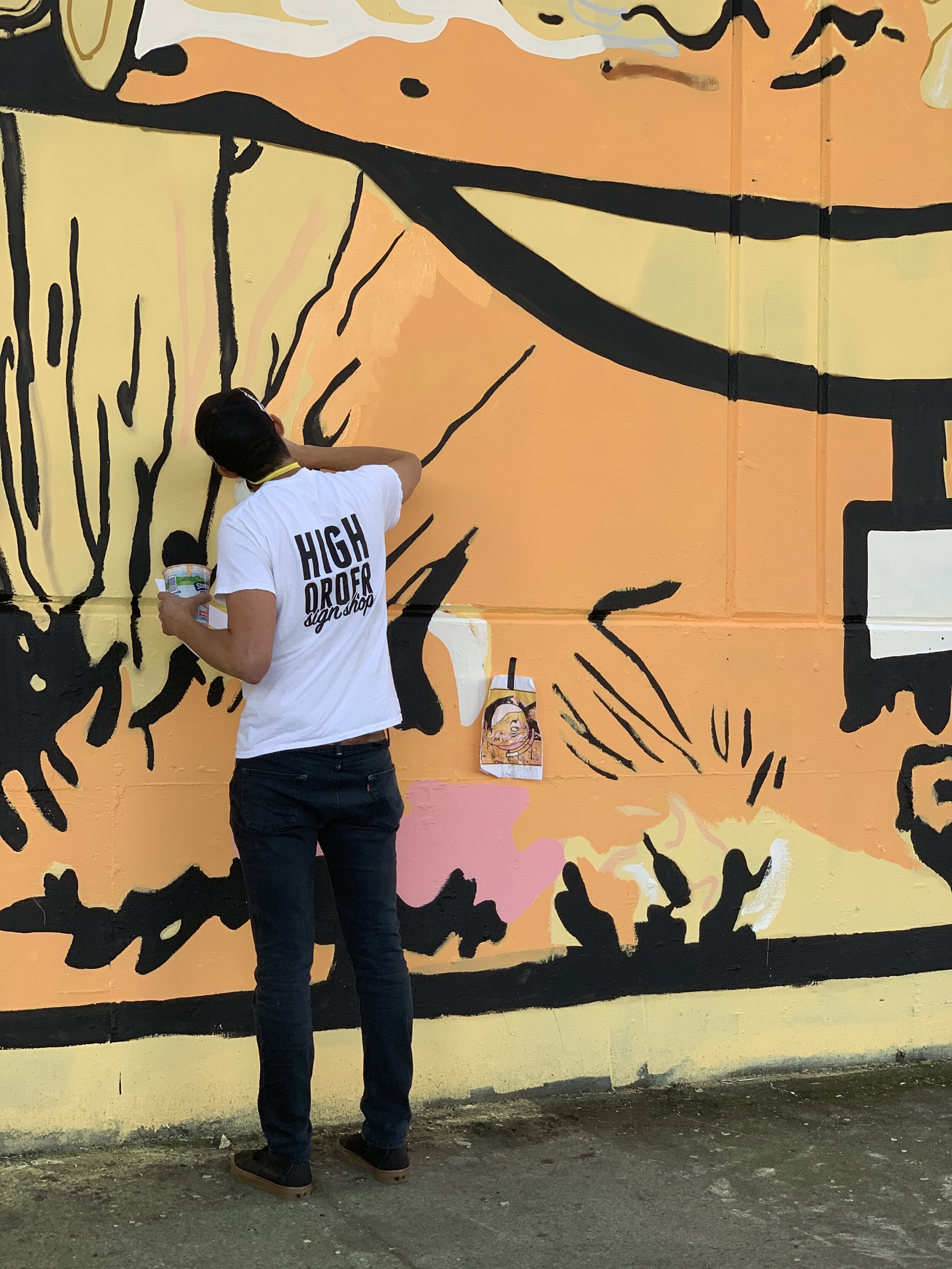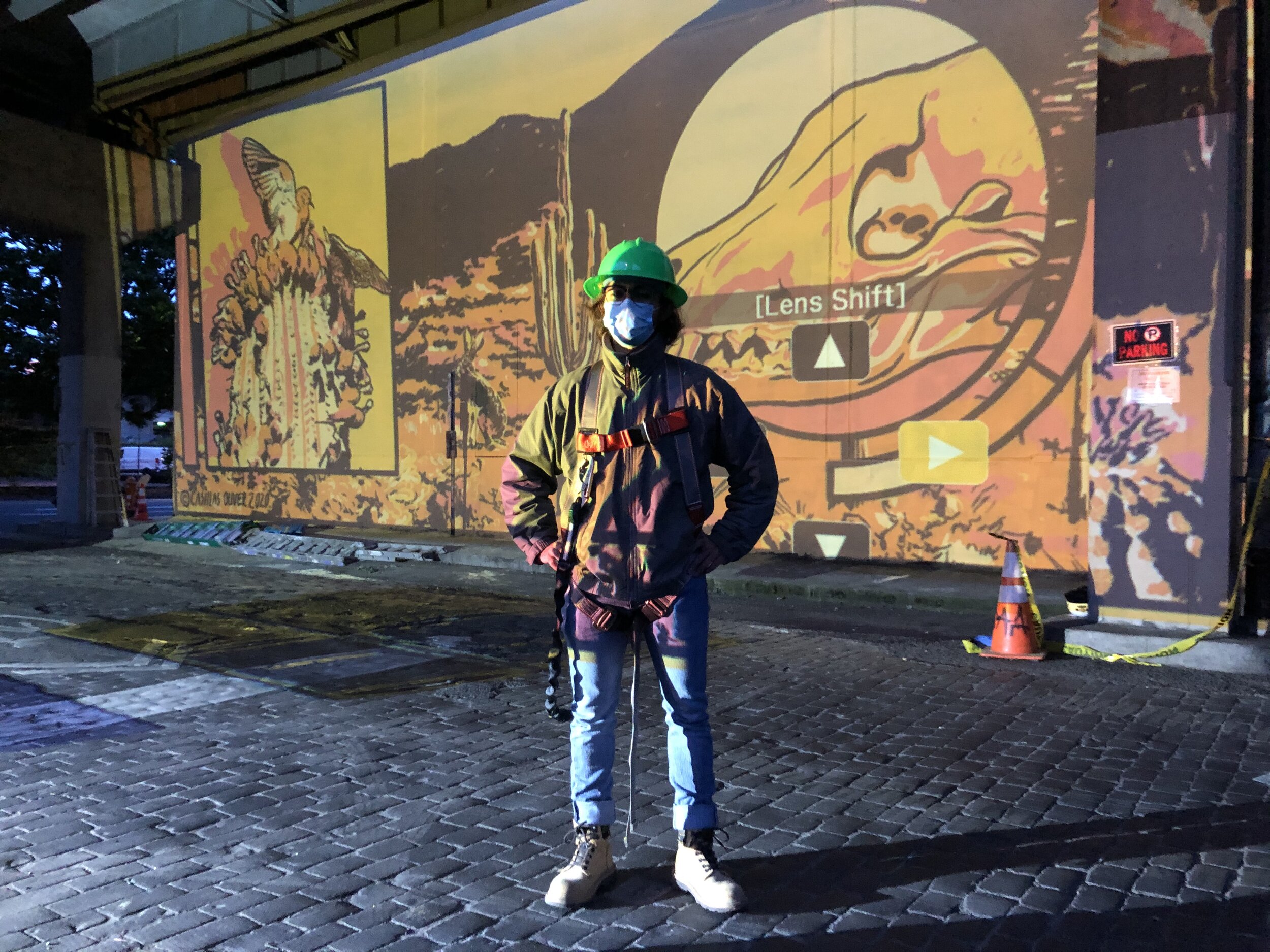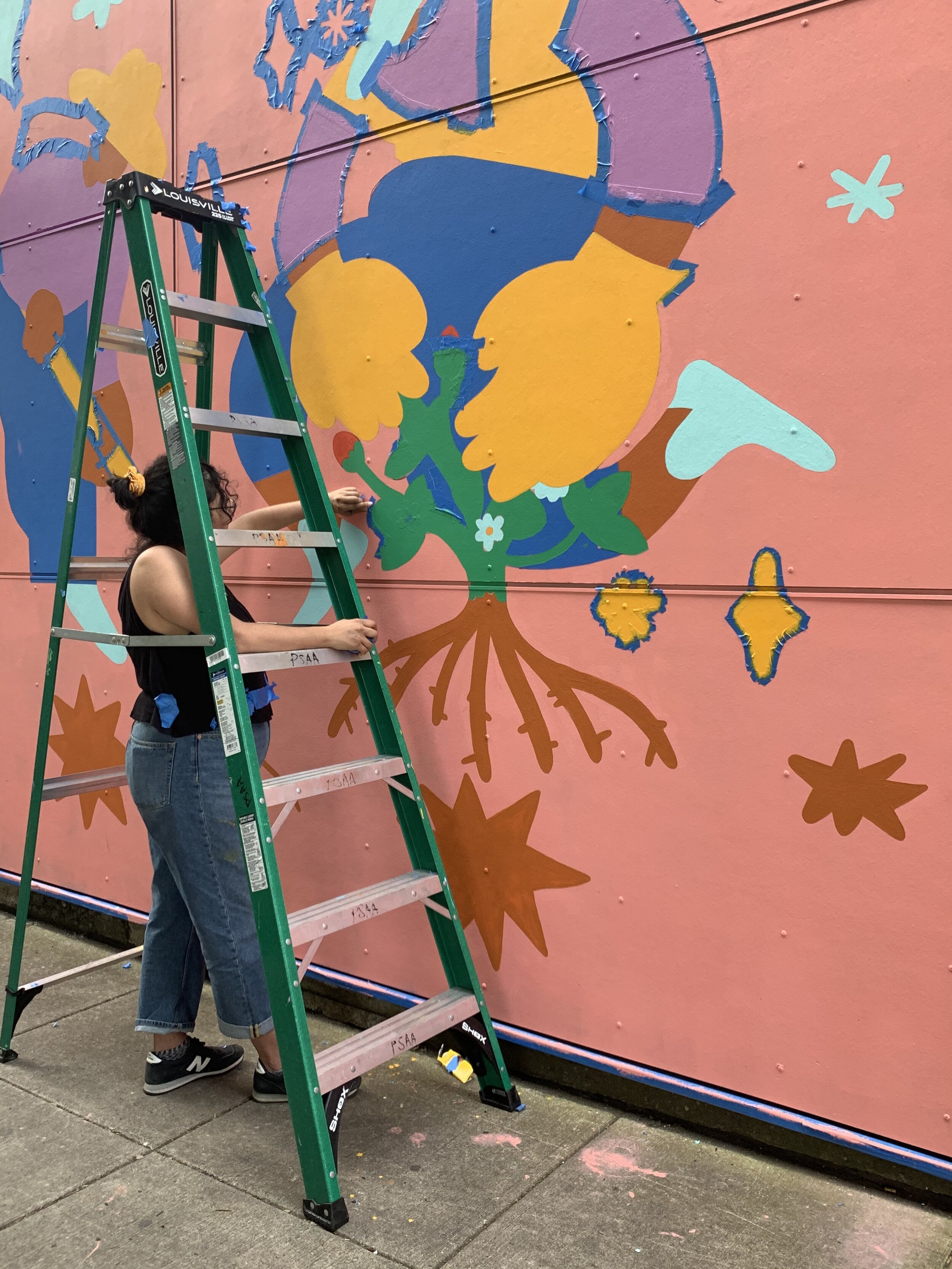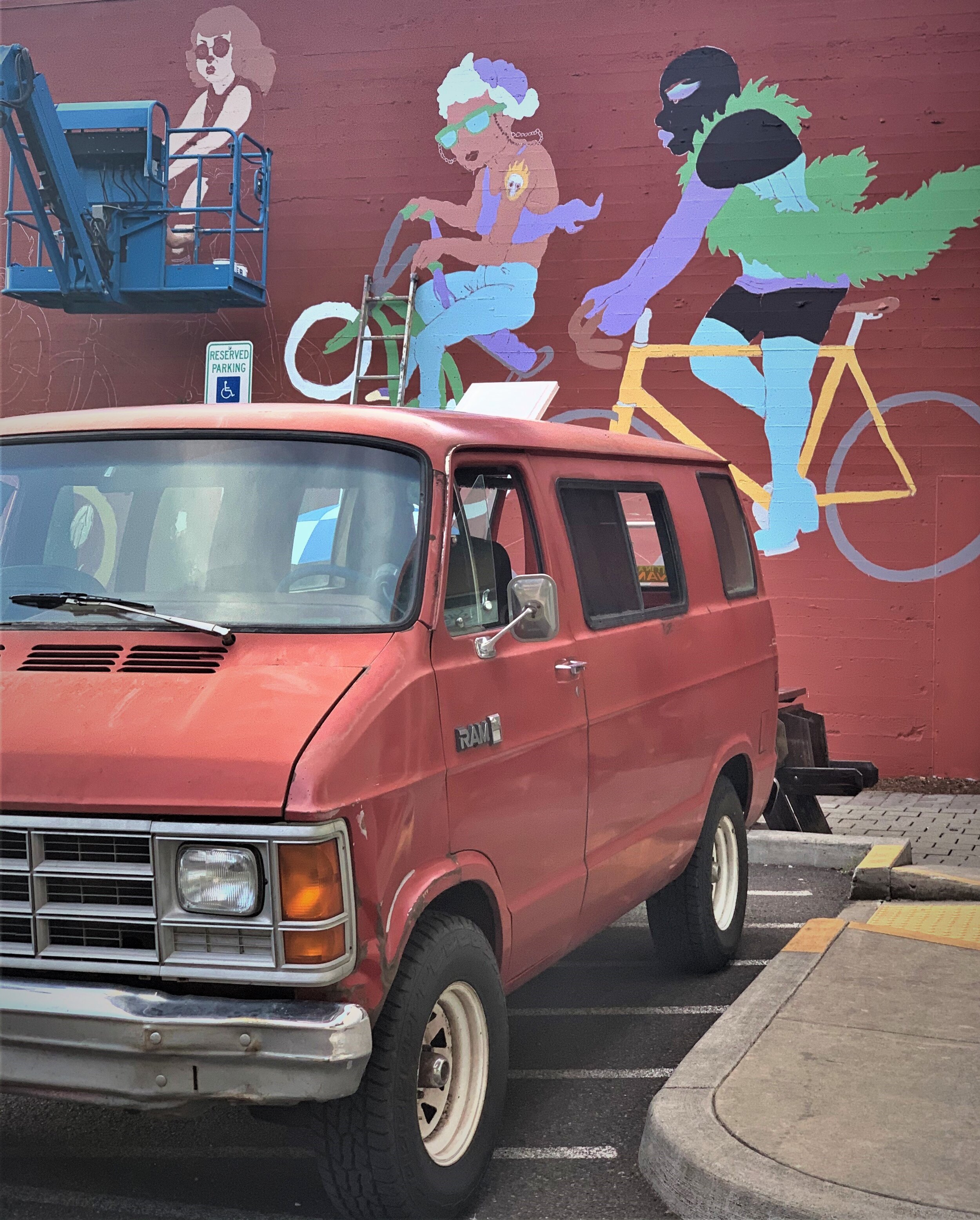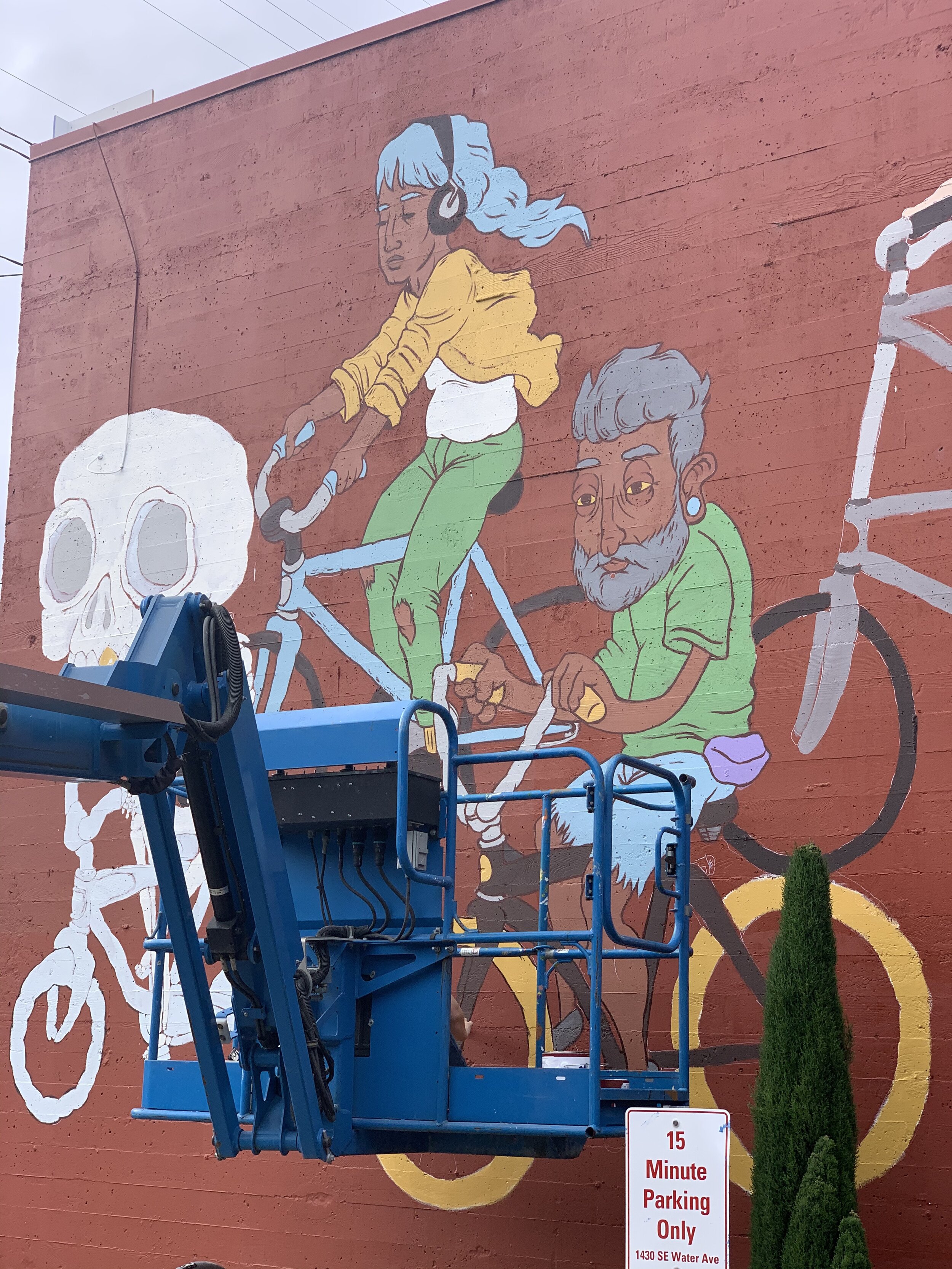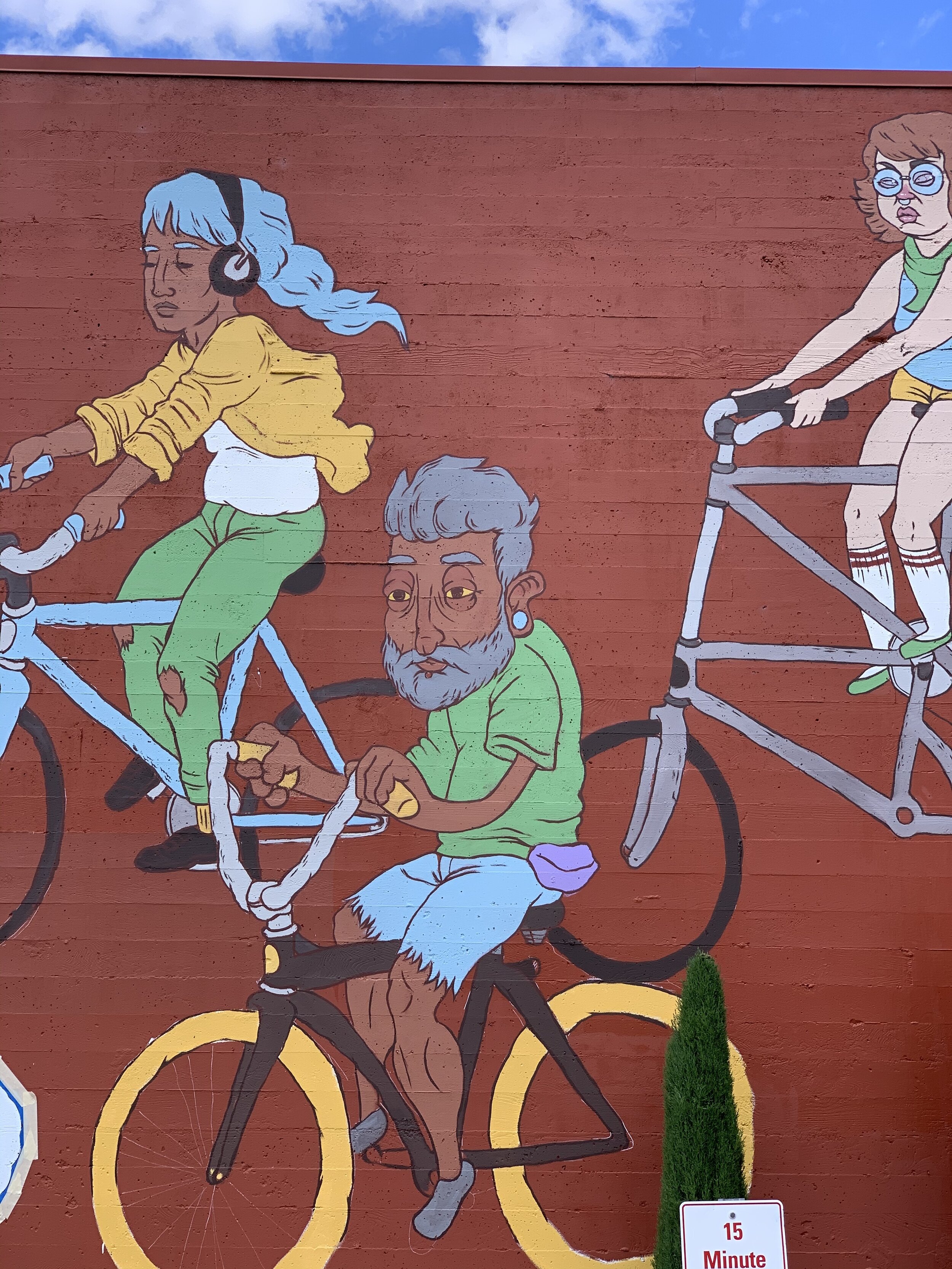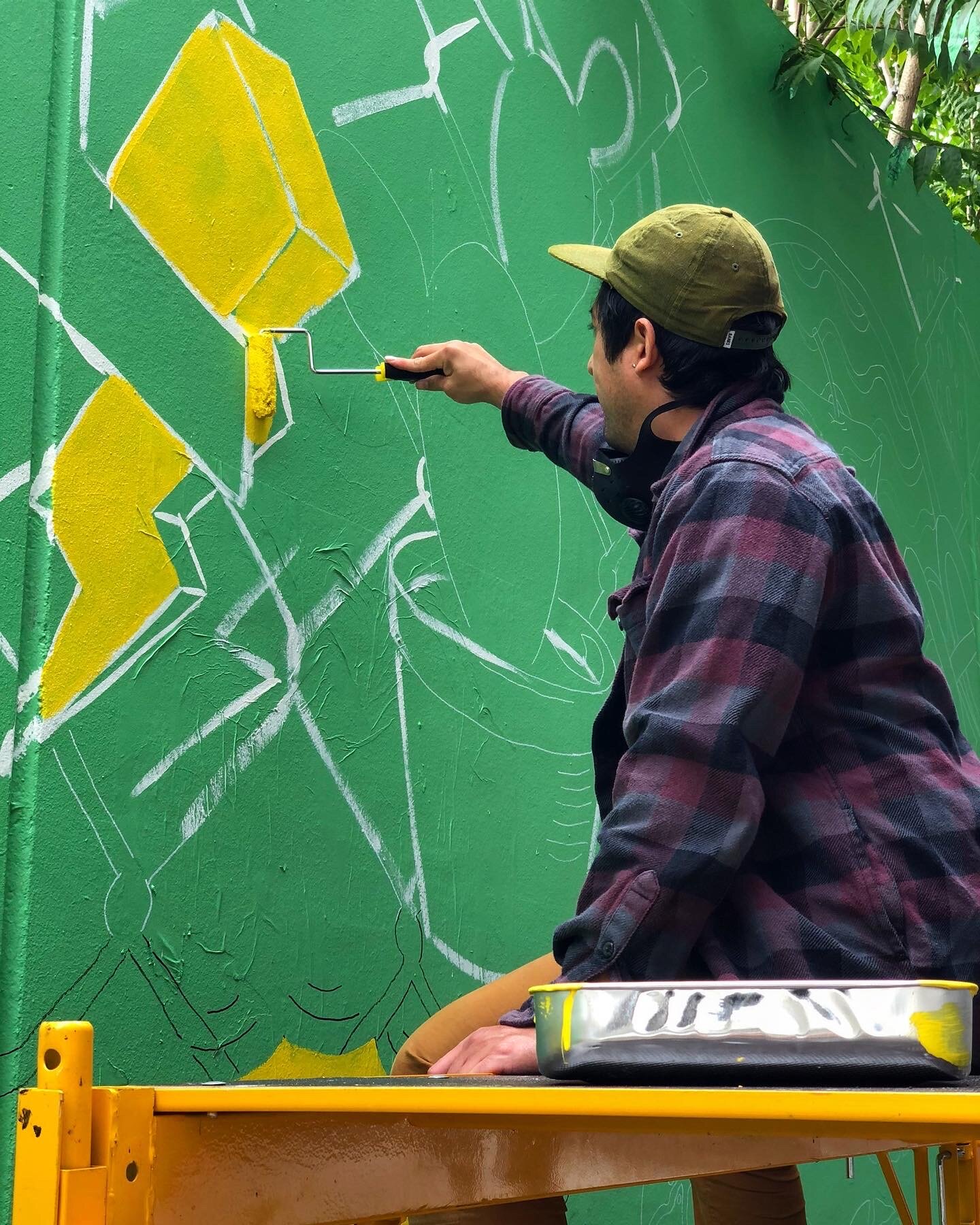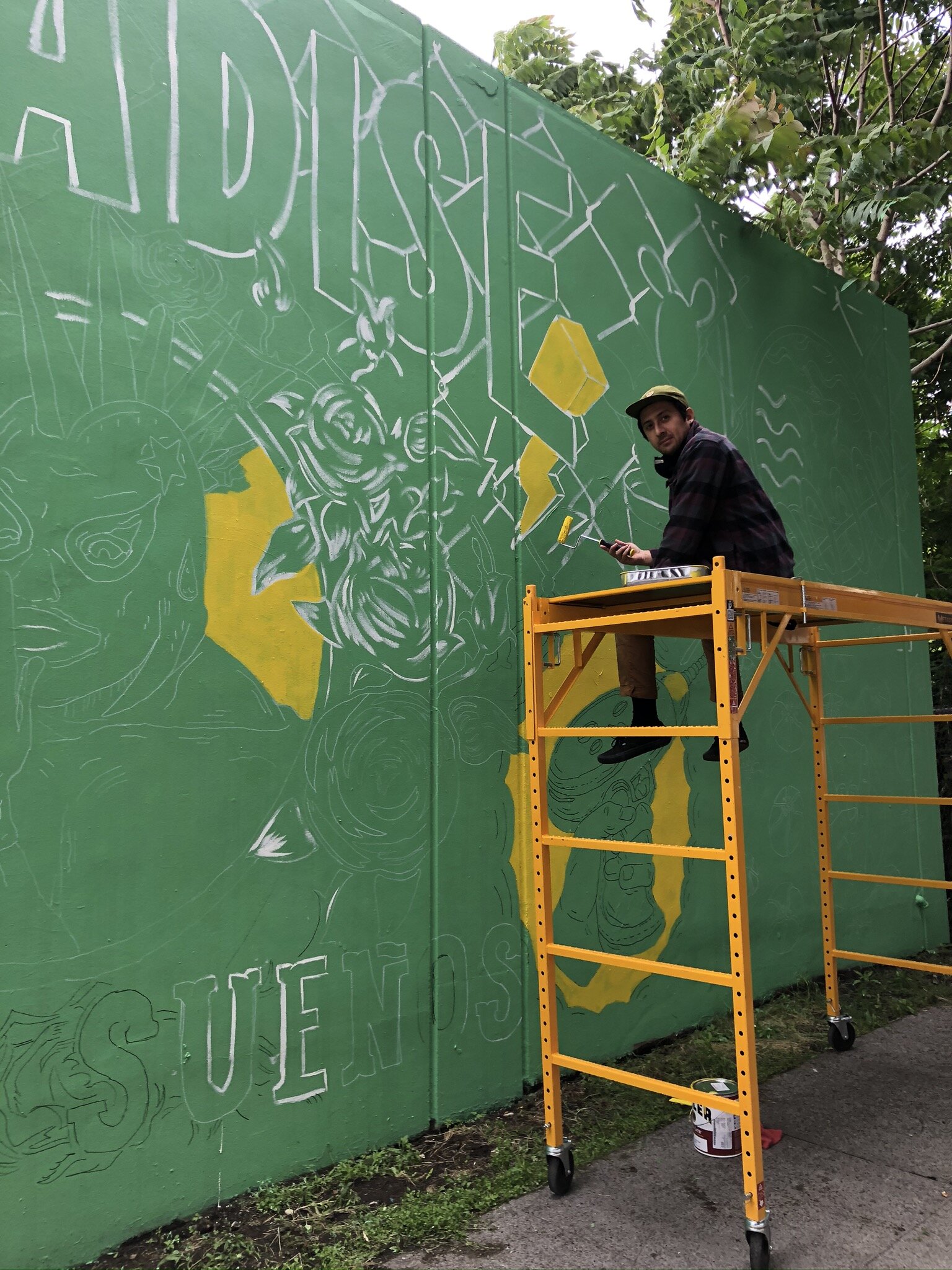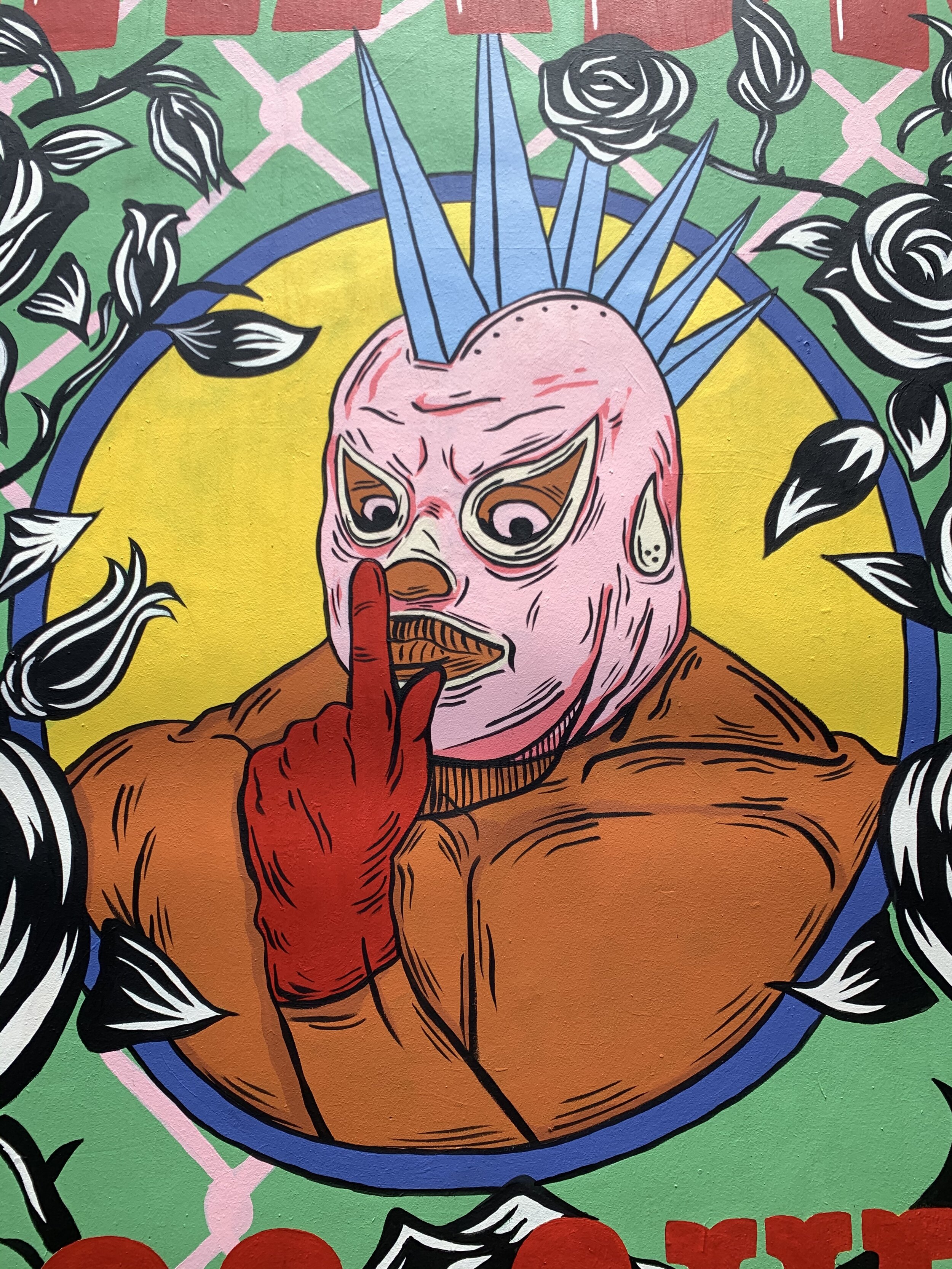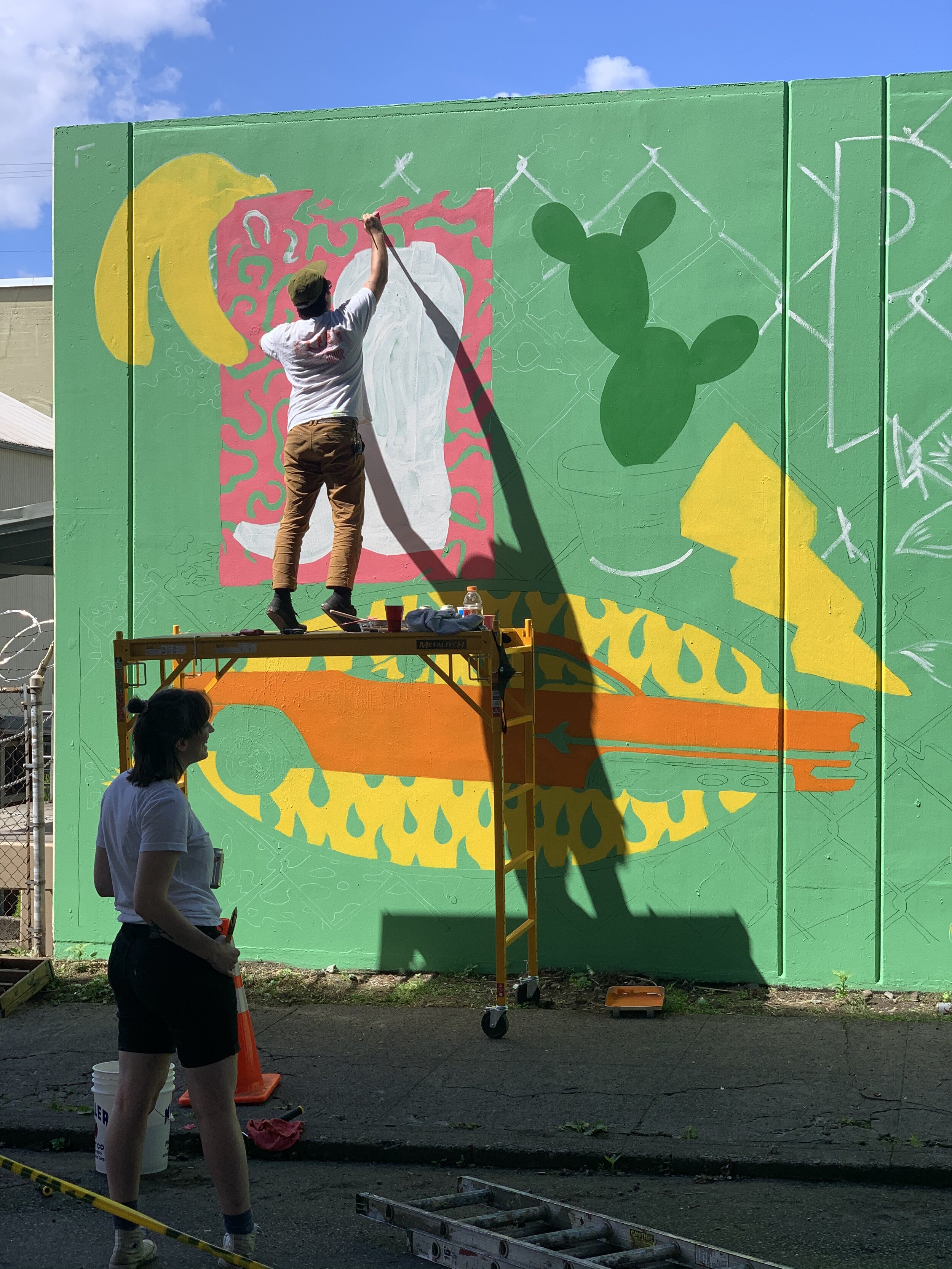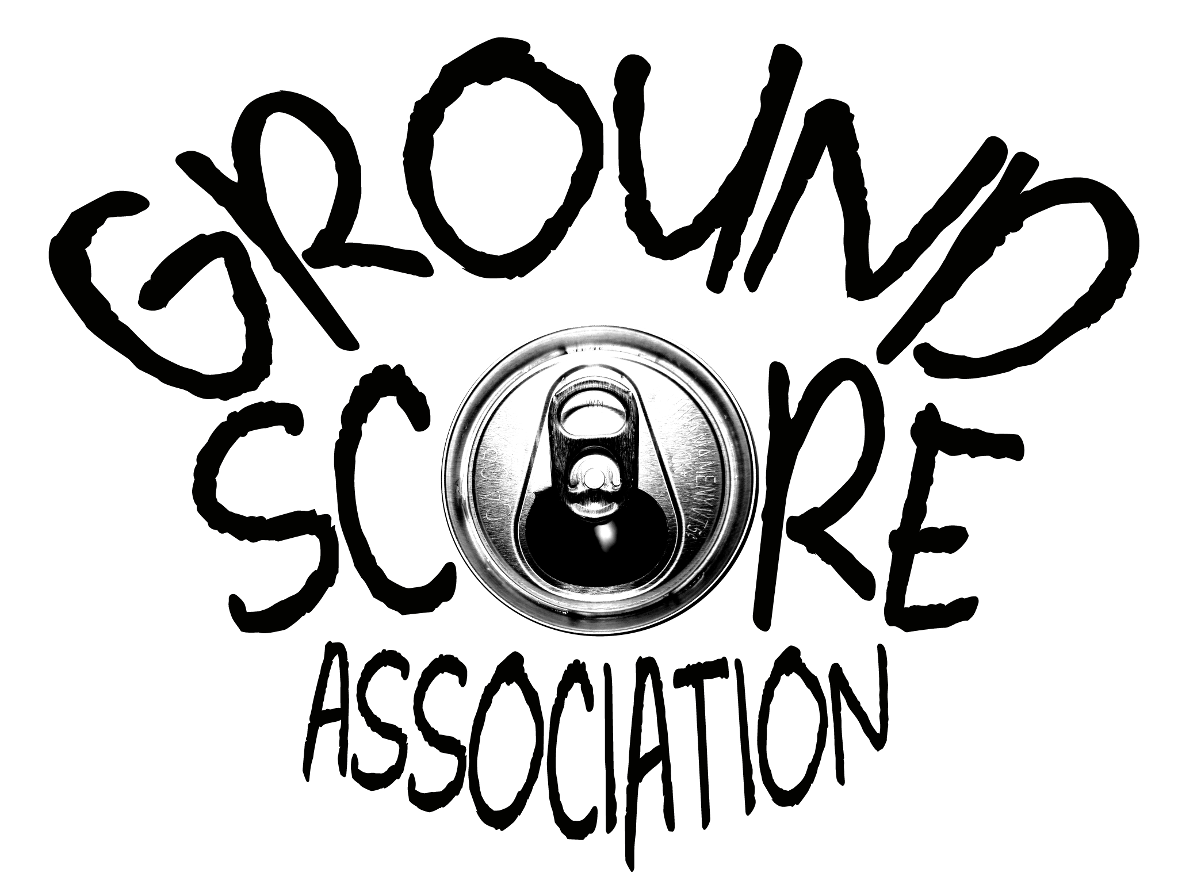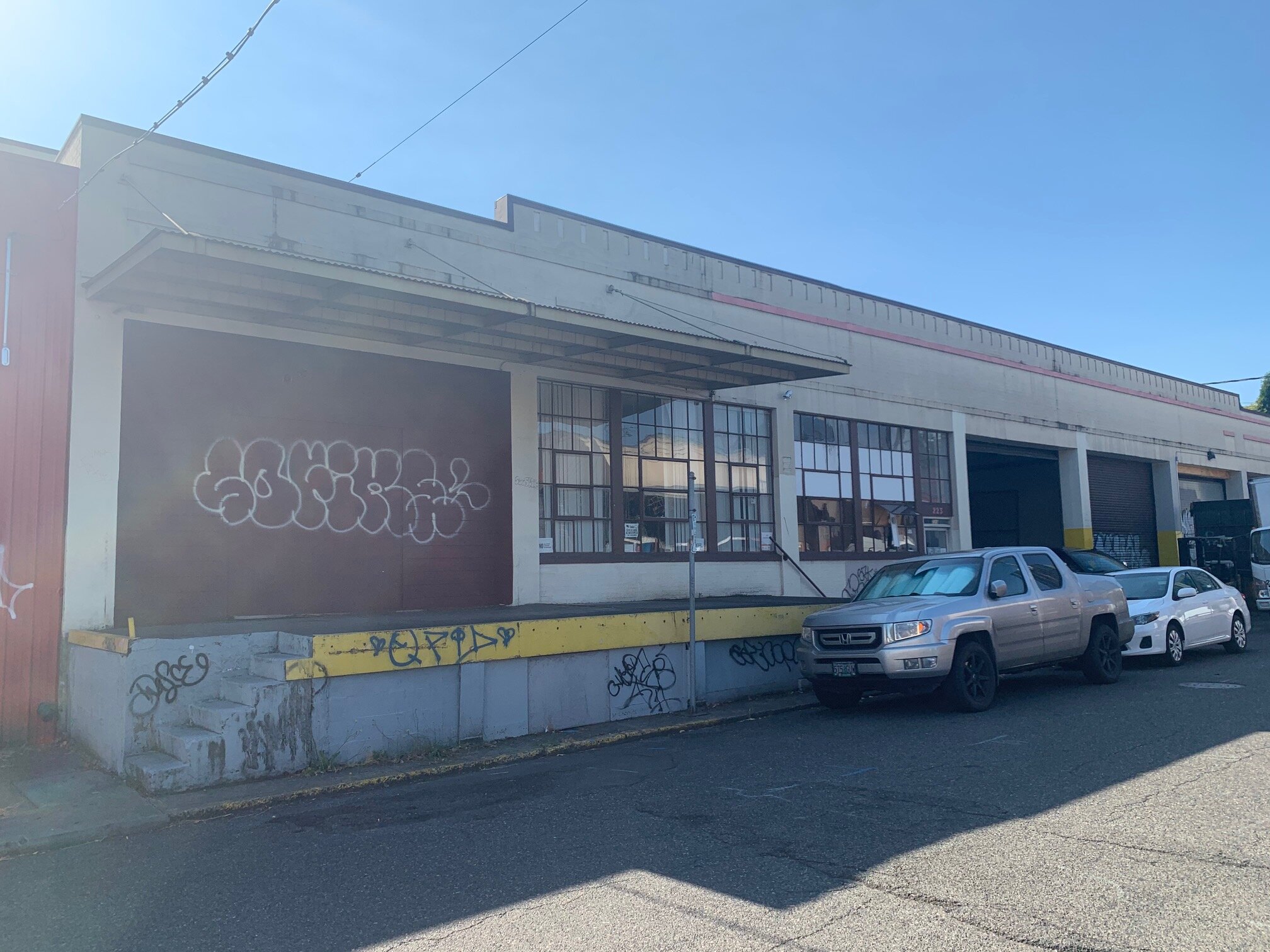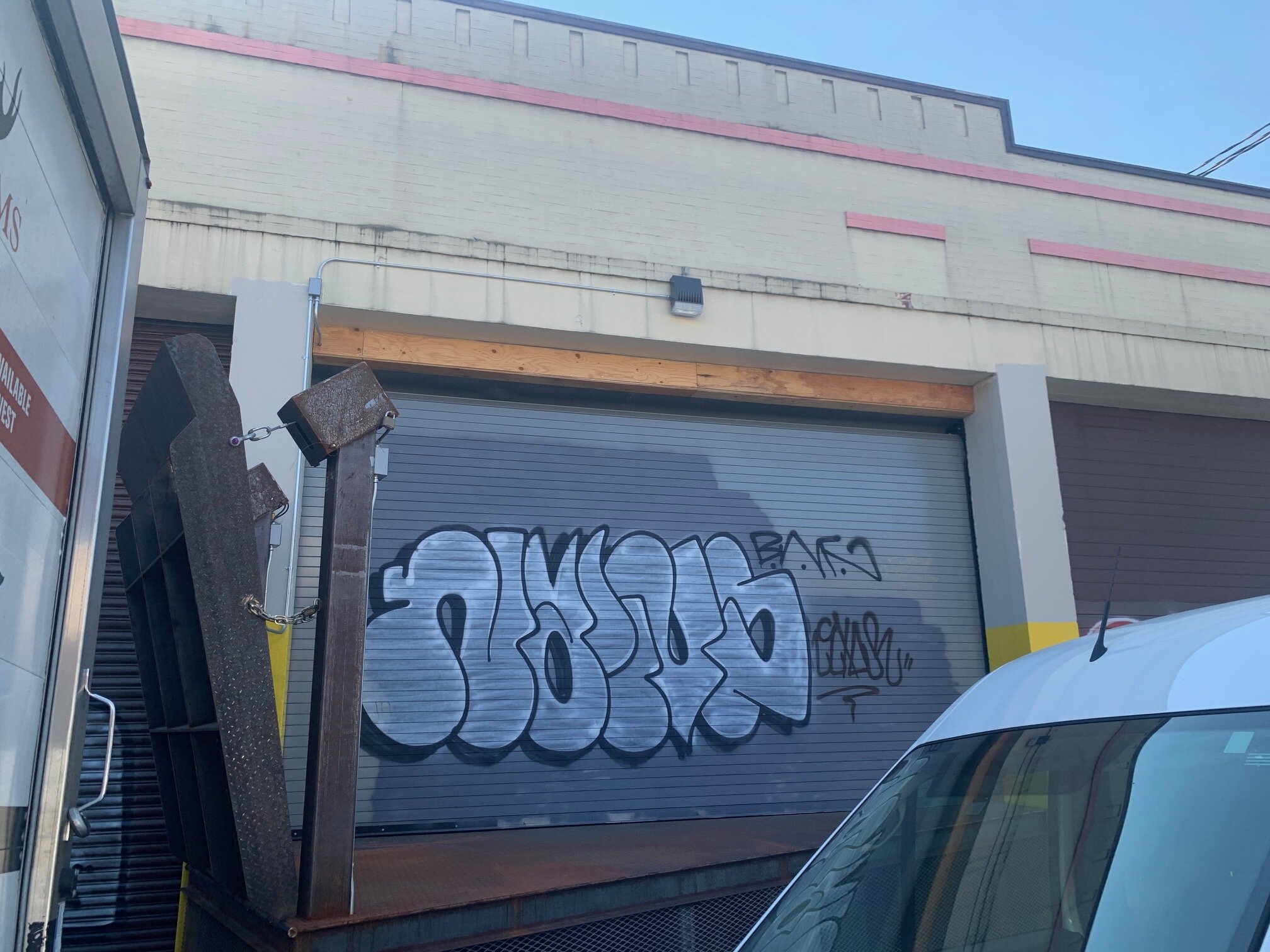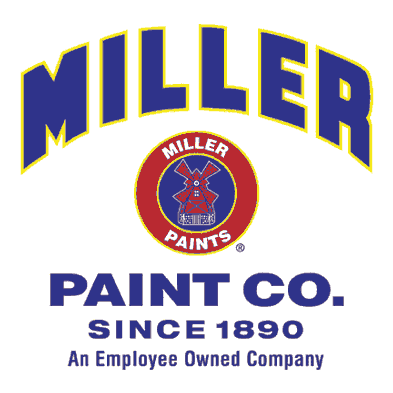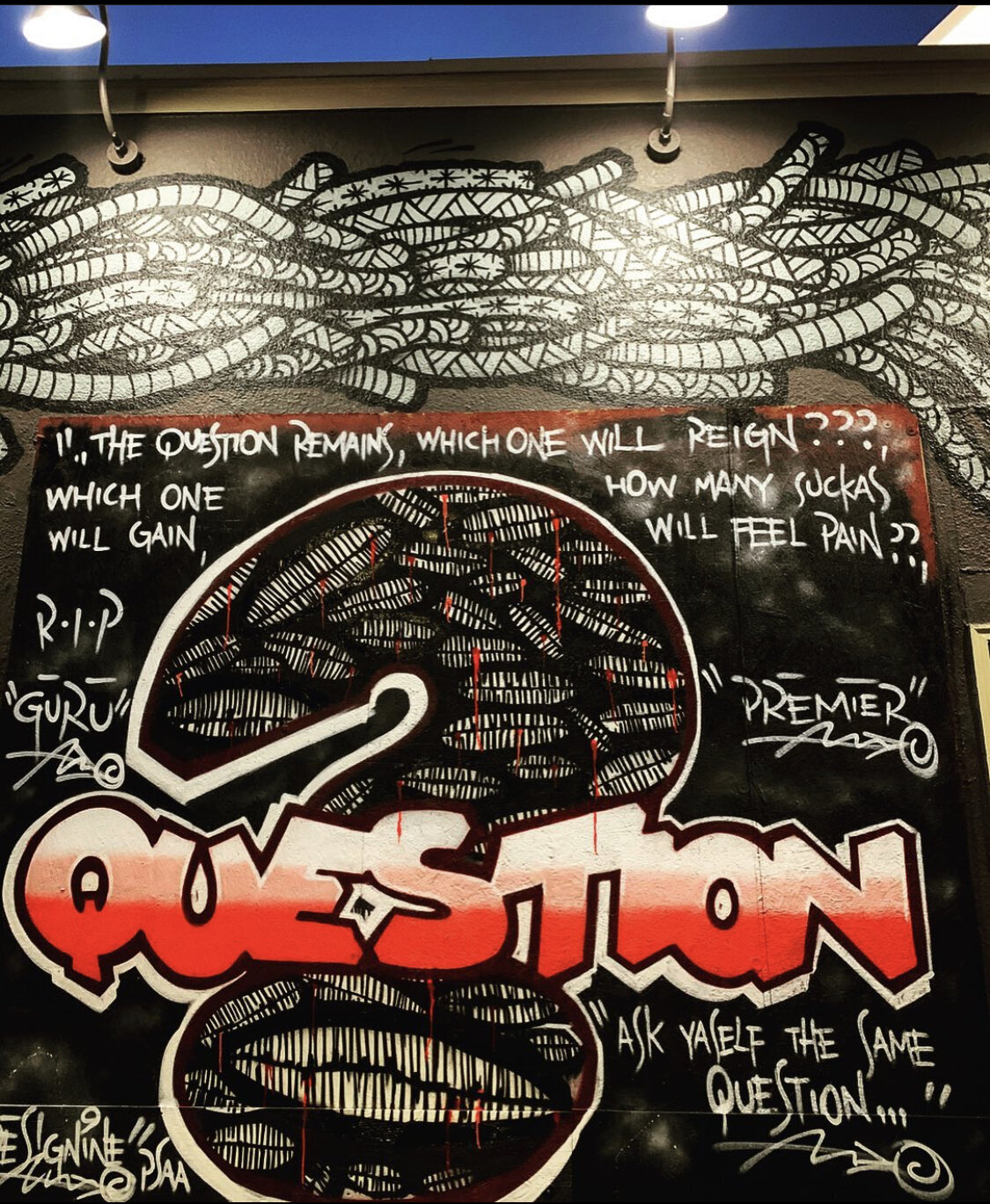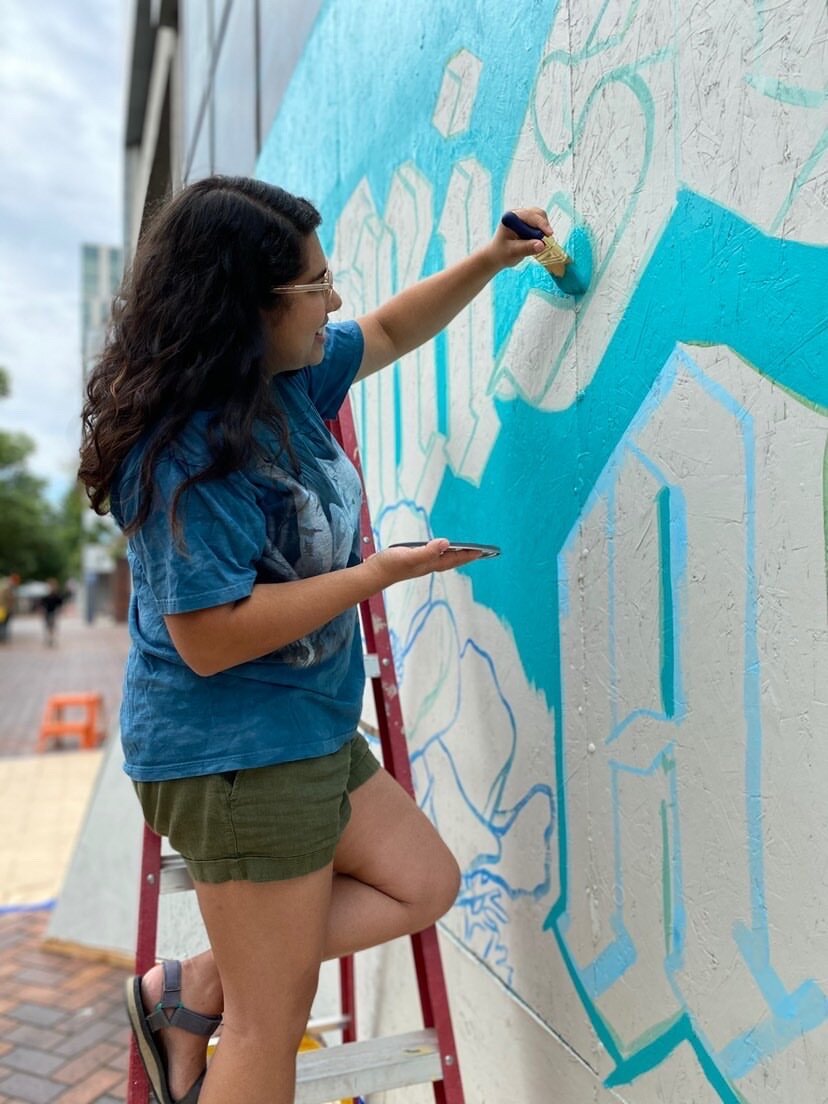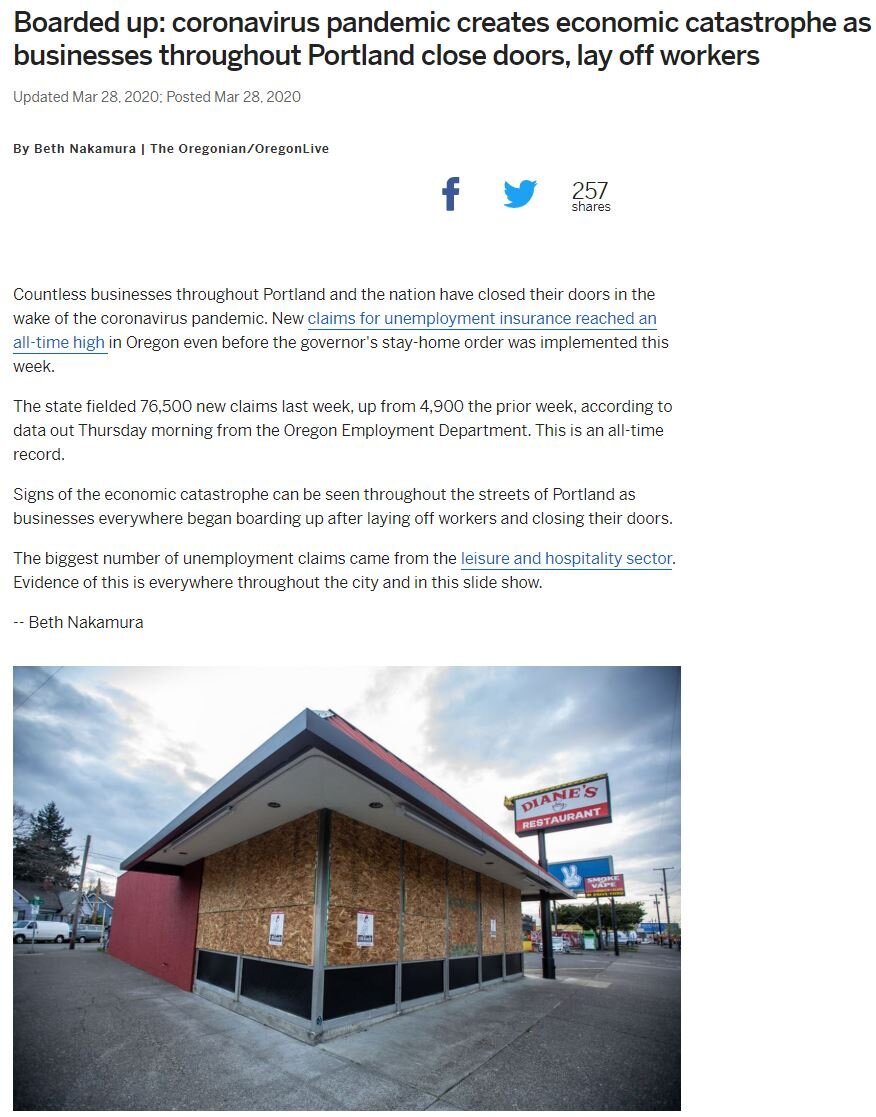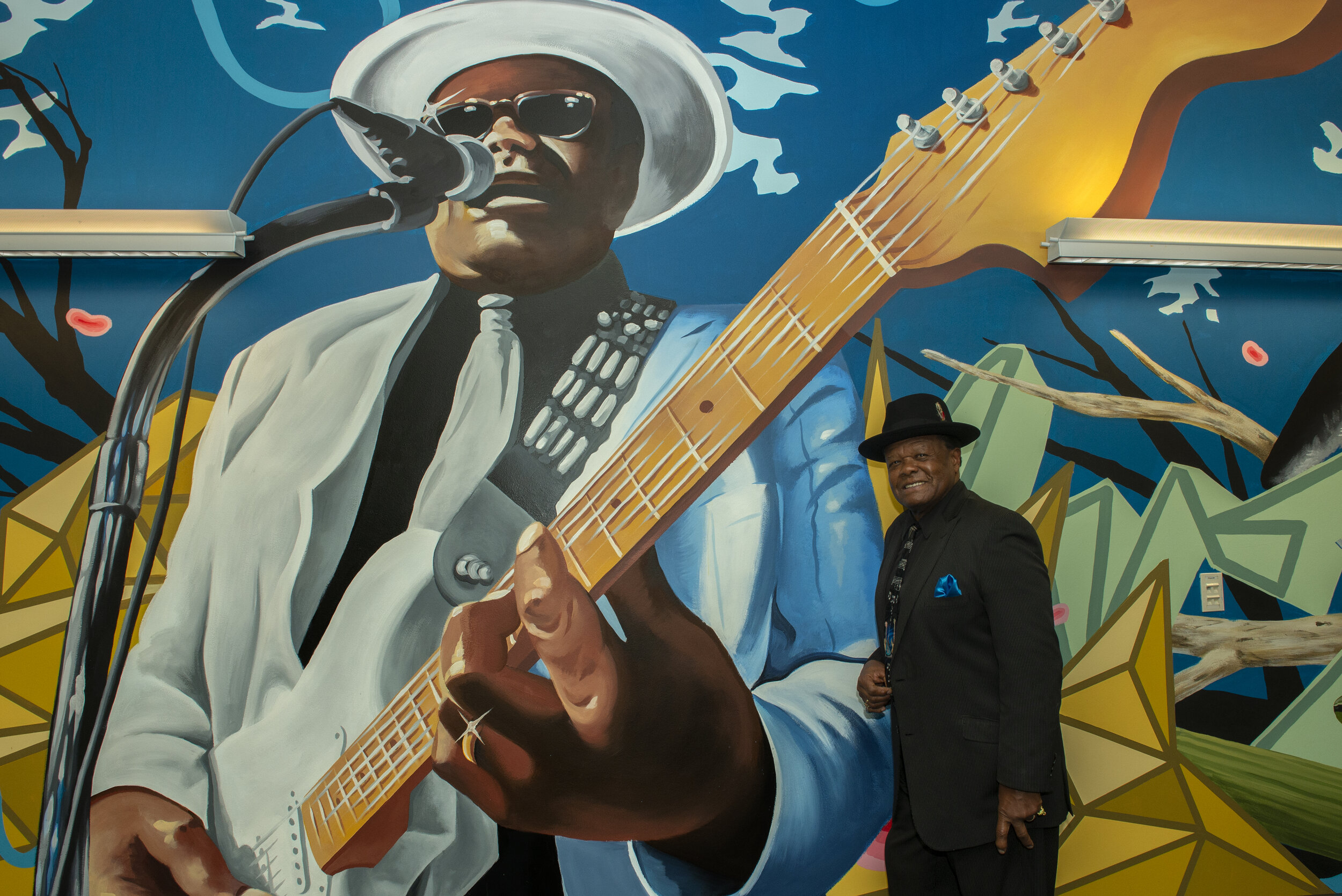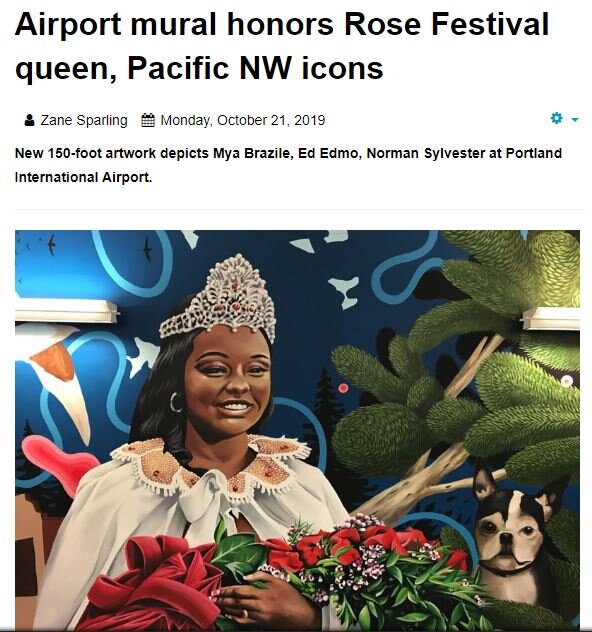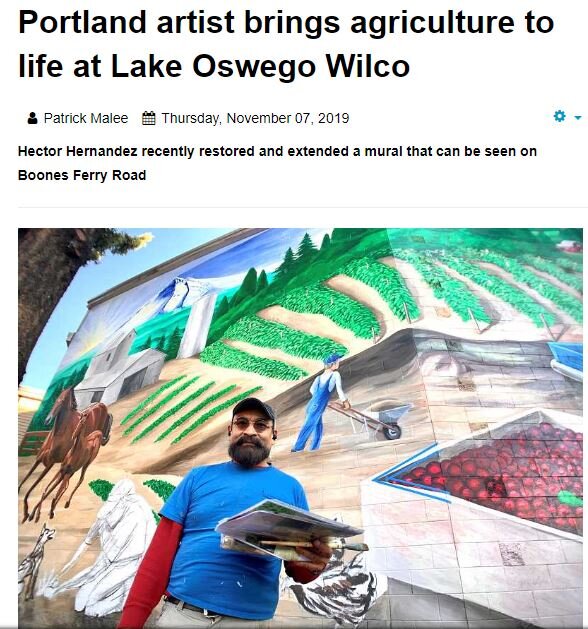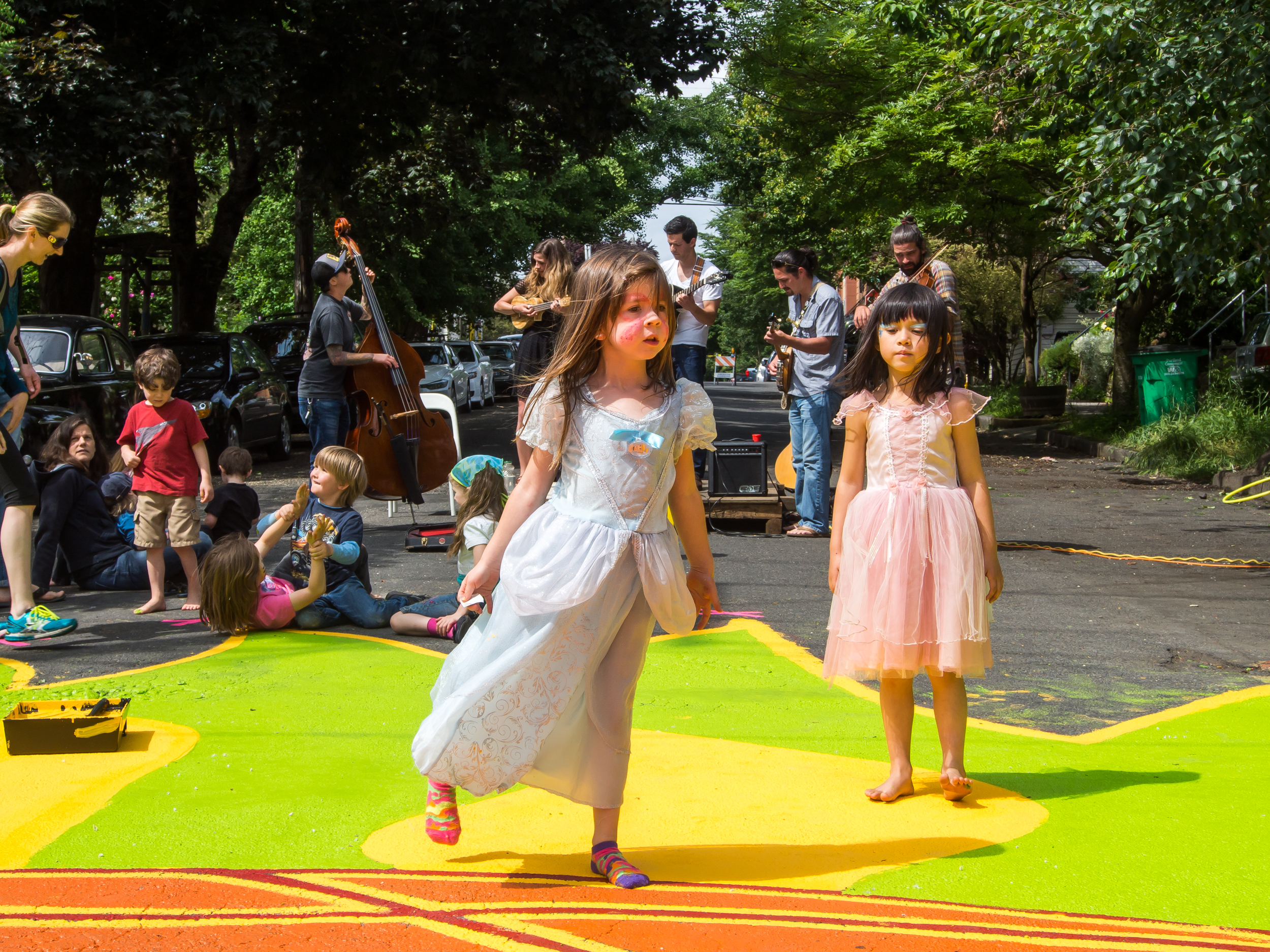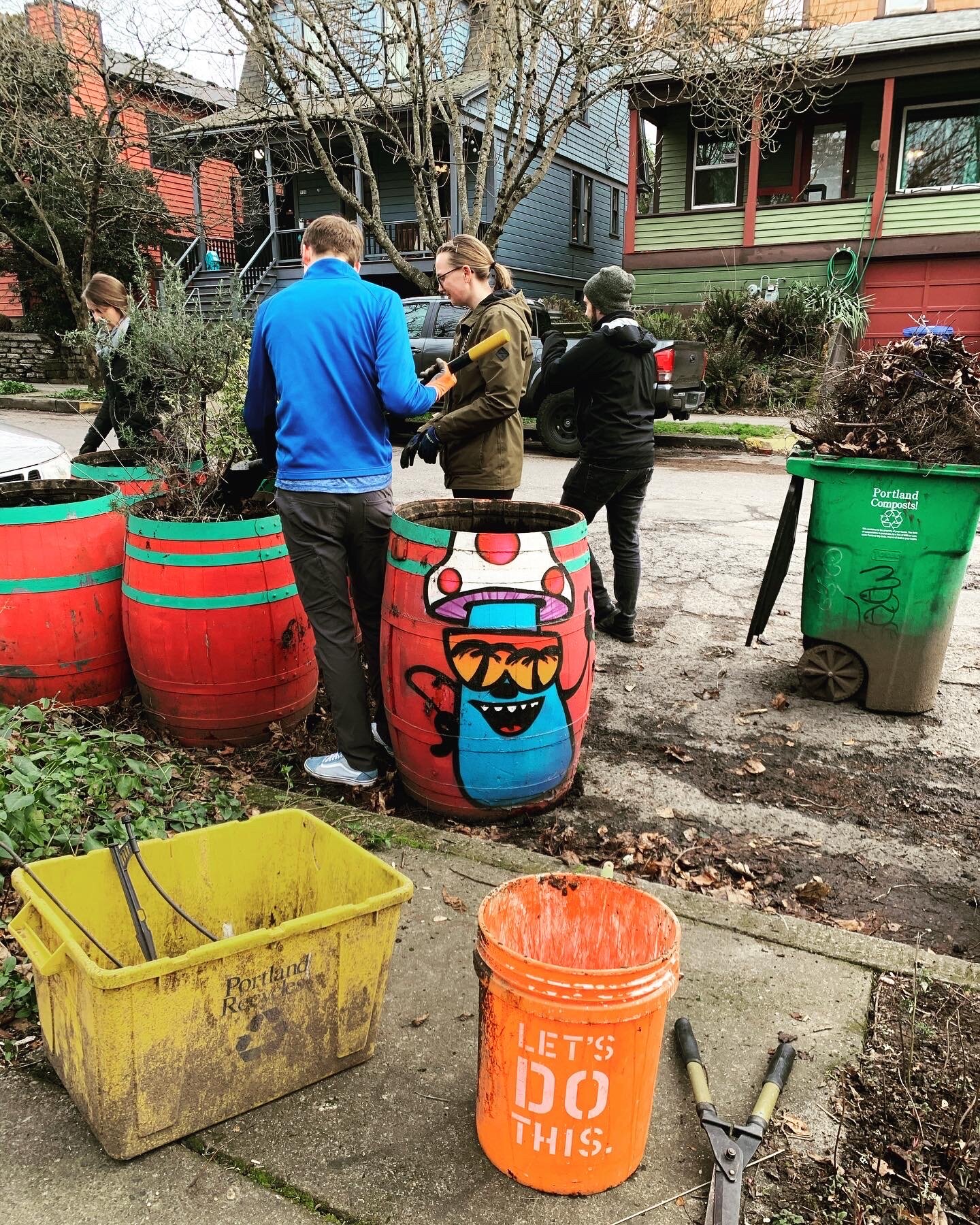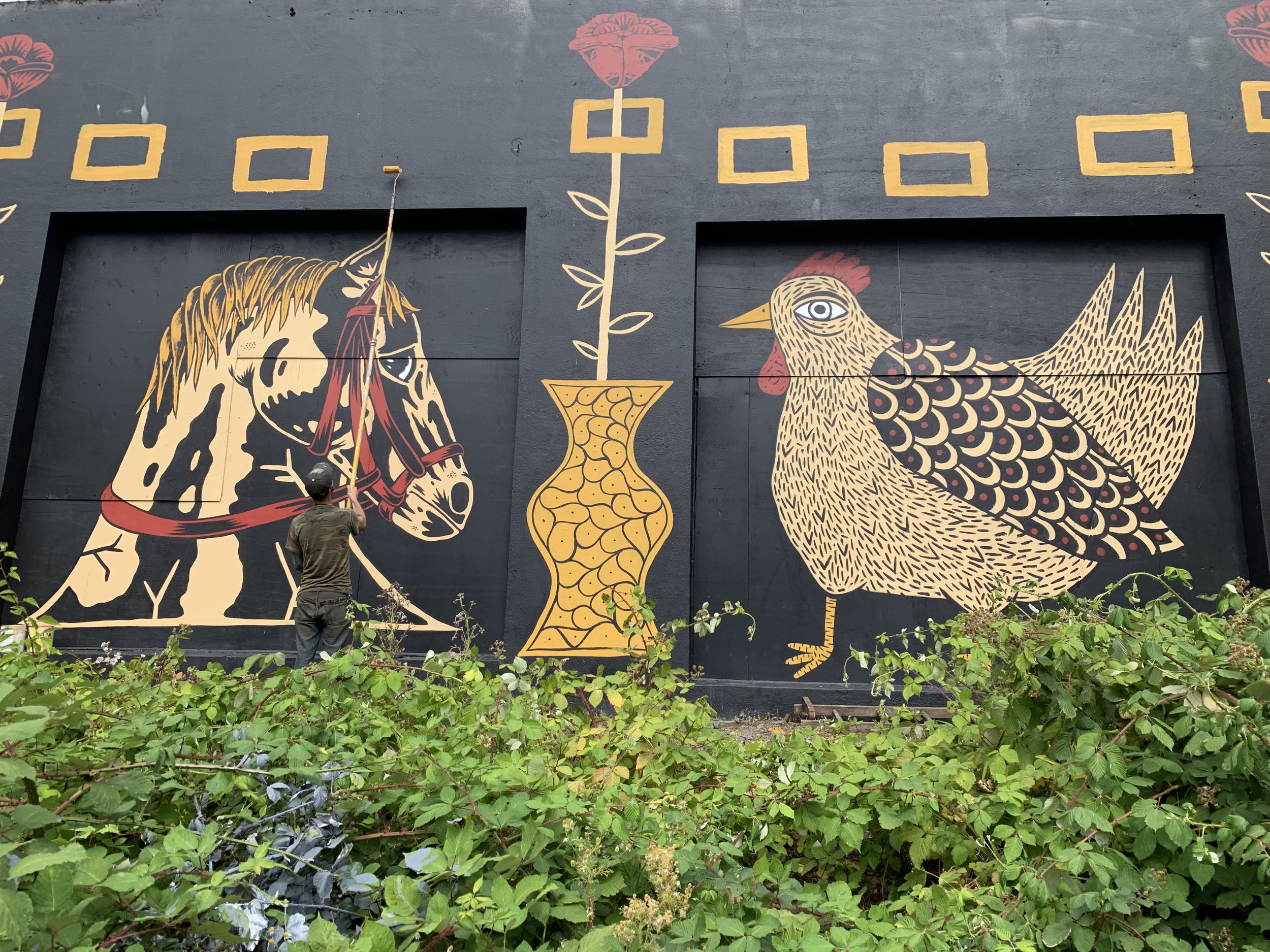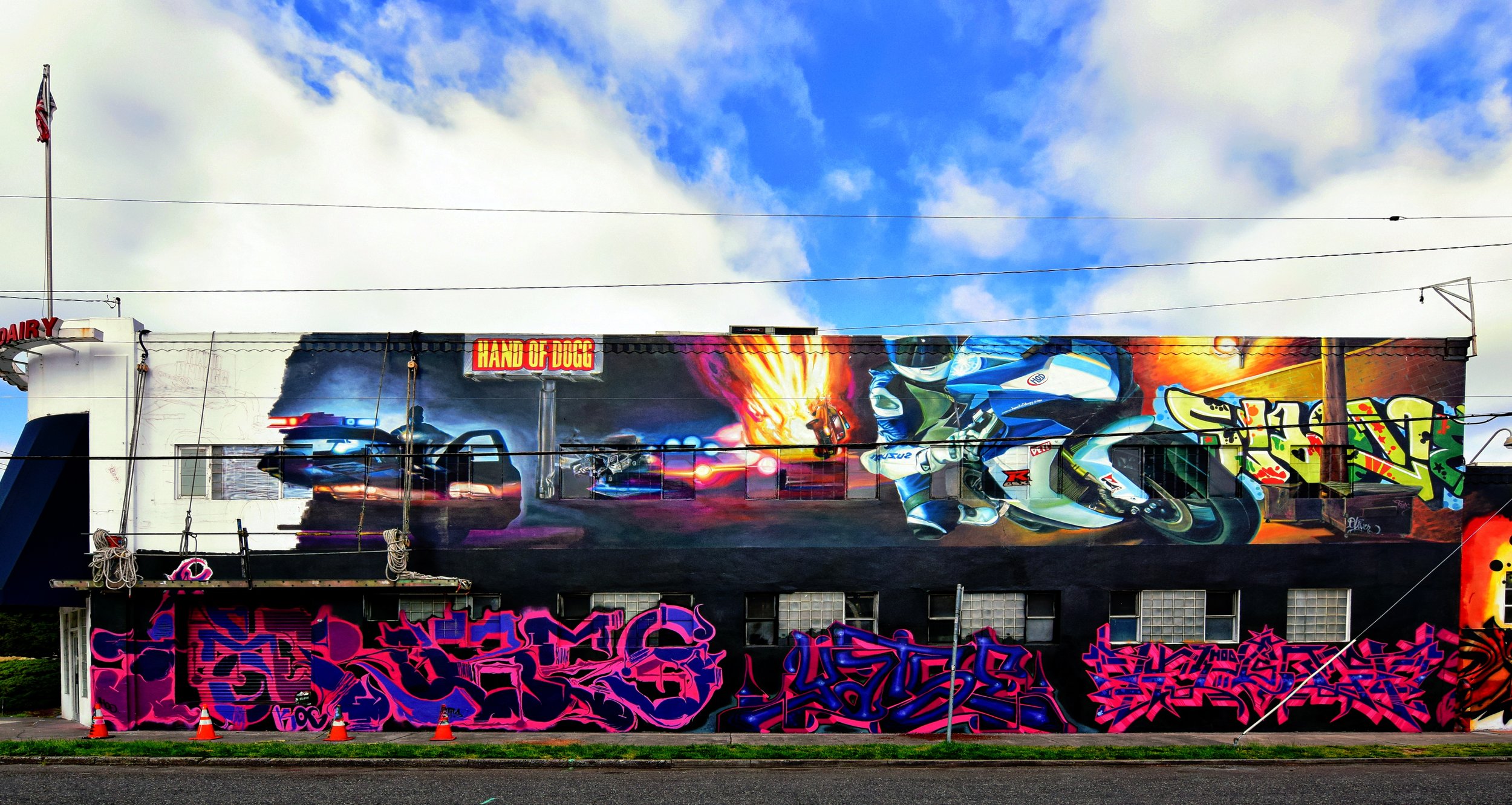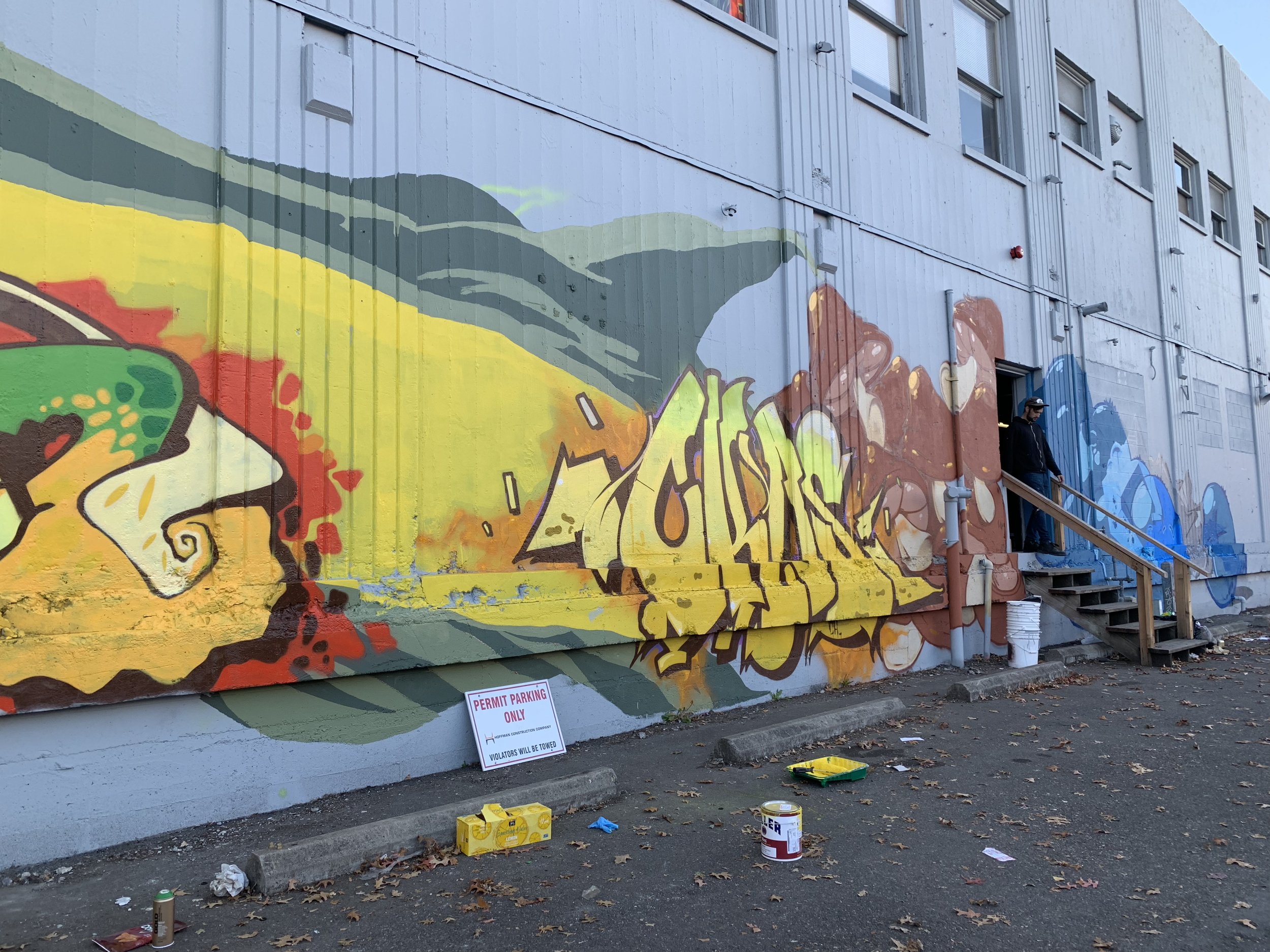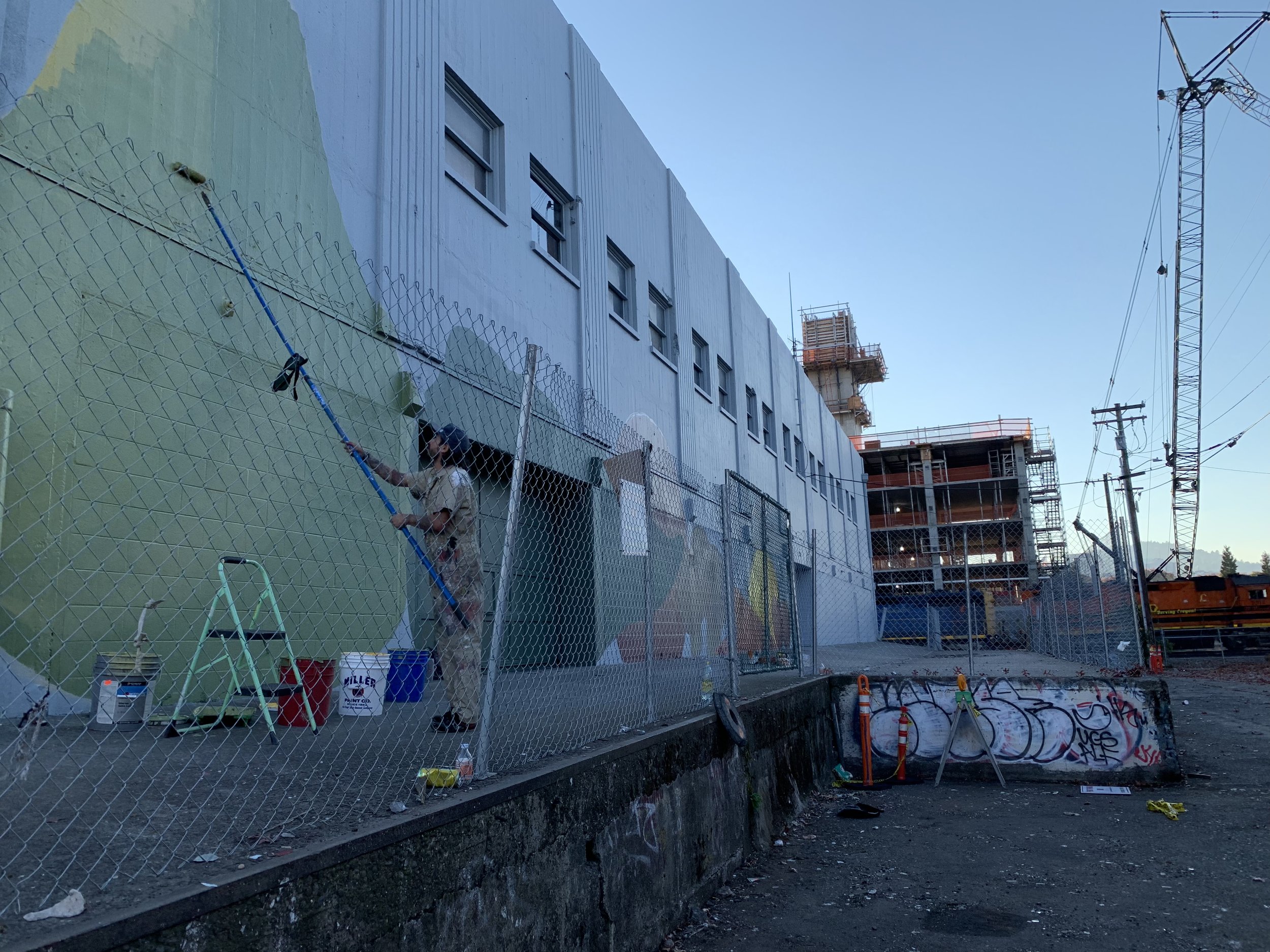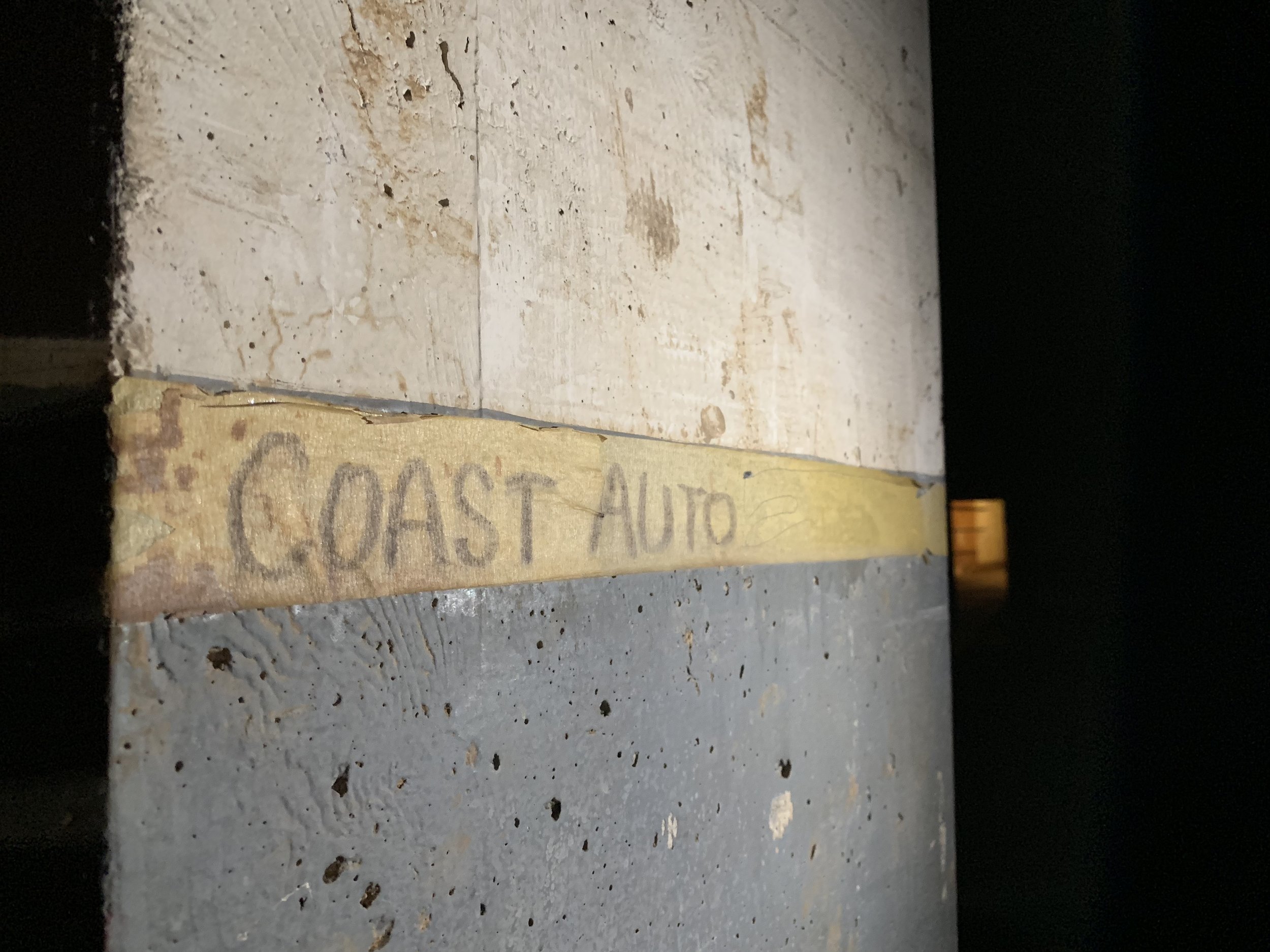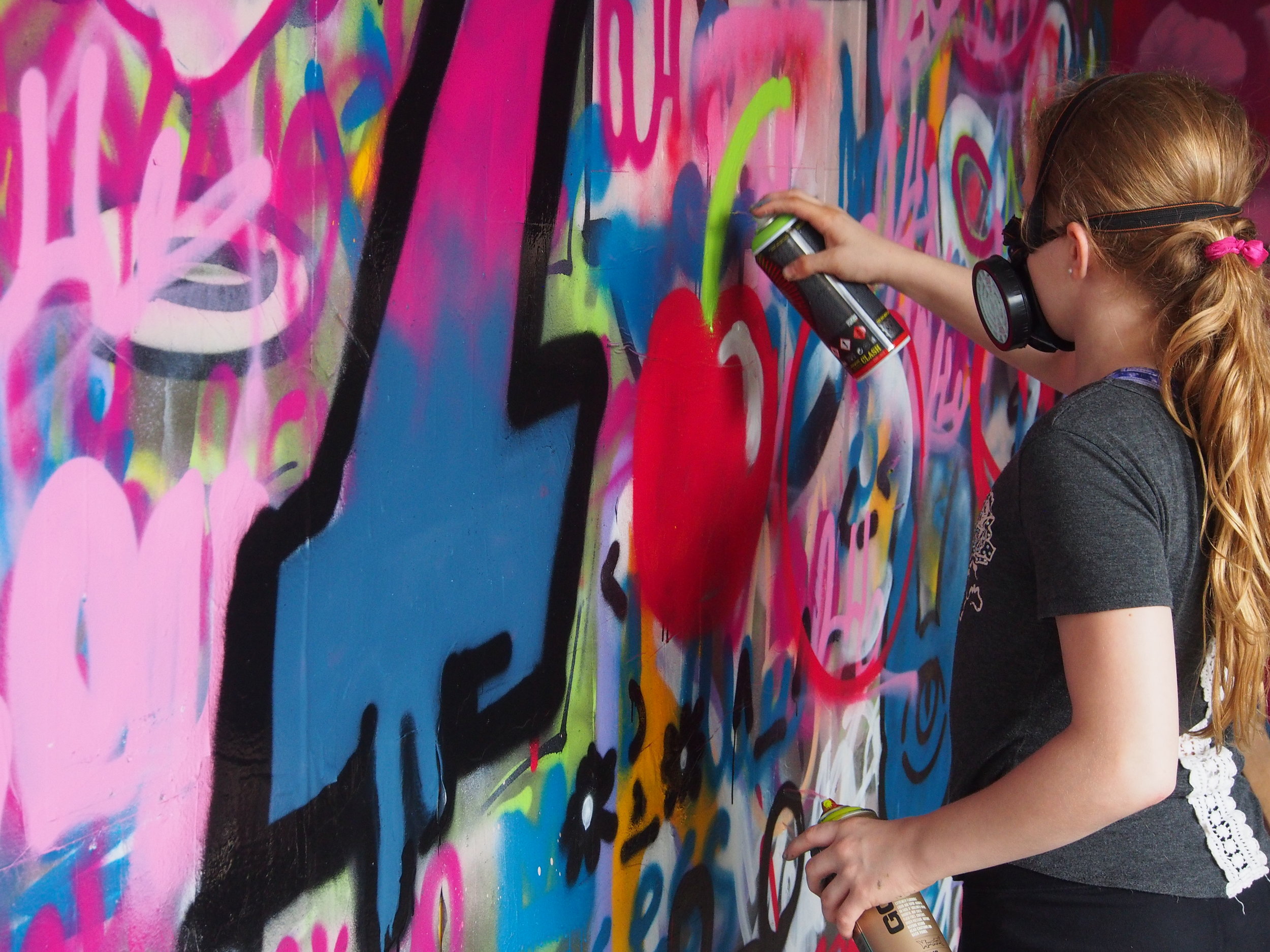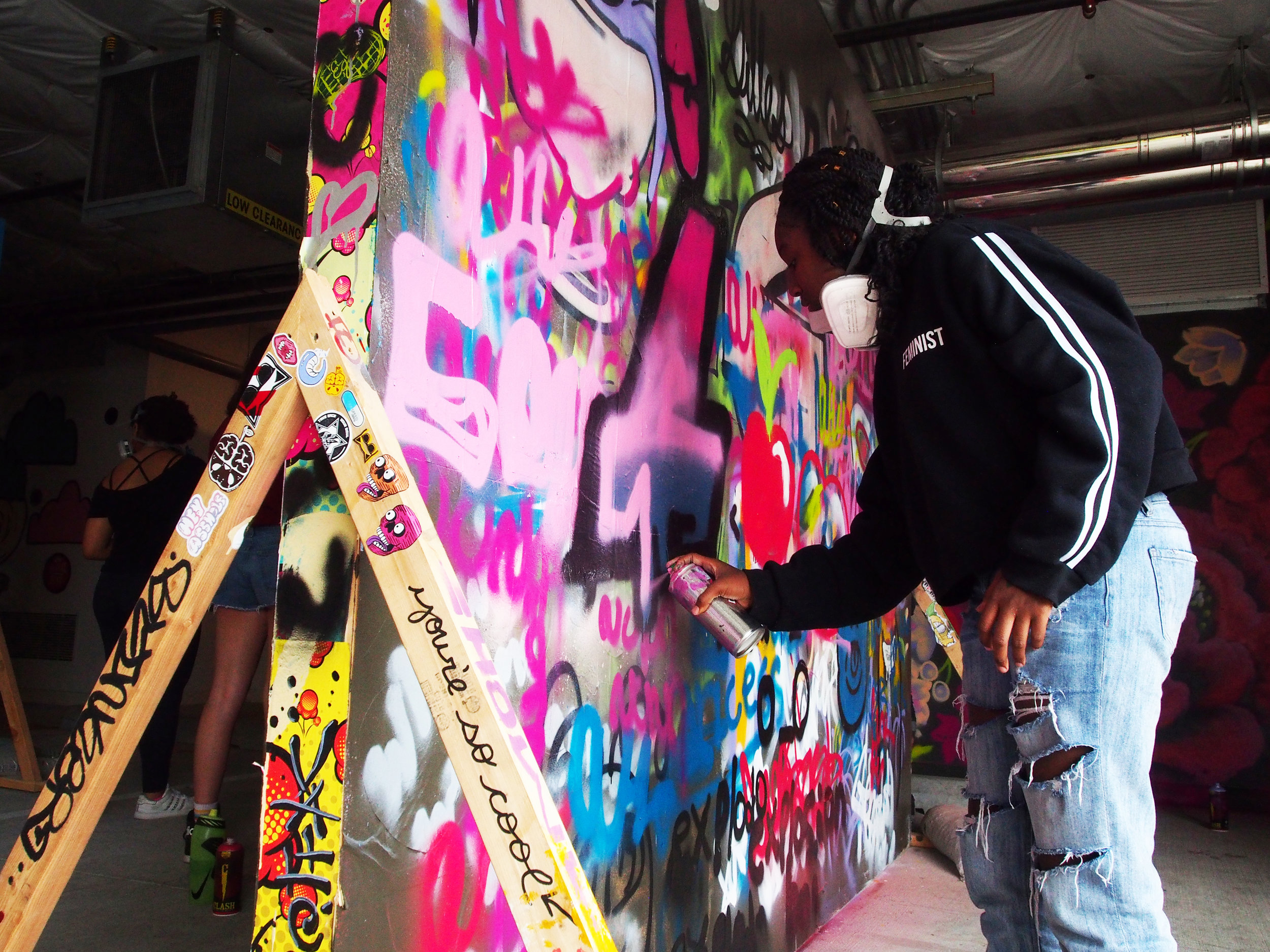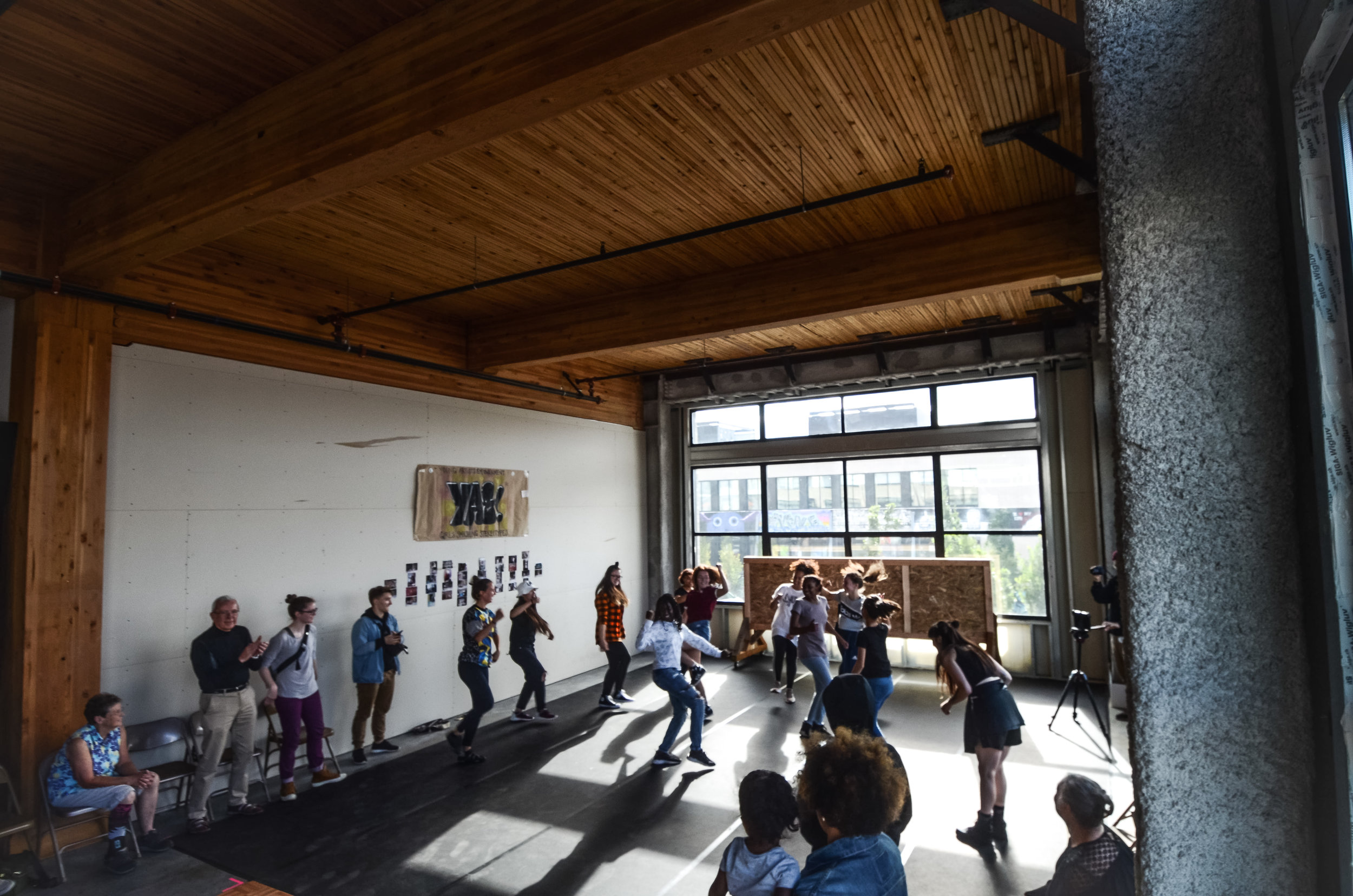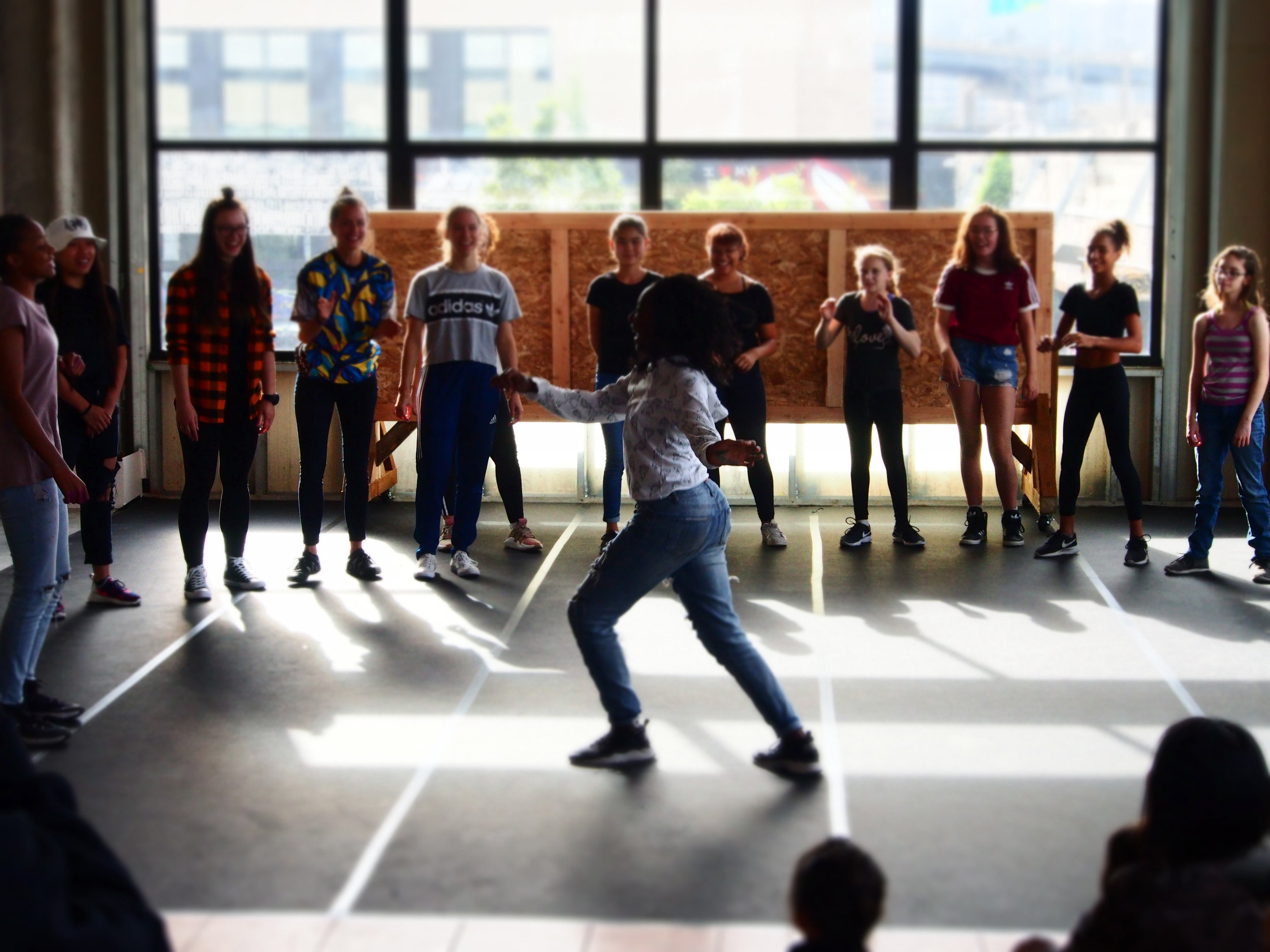Christian Téllez and Portland Street Art Alliance Paint a Massive Custom Mural
Mercato Grove , Lake Oswego
“Song Bird” in progress.
Mercato Grove, a new residential and retail destination at the intersection of SW Kruse Way and SW Boones Ferry Road in Lake Oswego, is now home to an impressive and expansive new mural titled “Song Bird”, an artistic collaboration between local non-profit Portland Street Art Alliance, muralist Christian Téllez, local creative agency Think Joule, and developer High Street Residential.
Mercato Grove blends a wellness-focused residential experience with a thriving local food scene unlike anything available outside the urban core. As part of their quest to establish this rising new destination, the creative team sought to enliven the outdoor spaces with beautiful, regionally-inspired art.
Think Joule and High Street Residential conducted an open call for proposals from regional street artists. The call: collaborate to design and install a massive 3,685 SF mural on 4 sections of exterior concrete walls, which are highly visible from the main parking garage entrance and directly face the windows of many of the apartment units.
“The scale and prominence of this mural added an extra challenge in contributing to the art direction of this piece. We wanted it to both make a statement and have broad appeal.”
– Jennifer Bryan, Creative Director, Think Joule
After a competitive proposal and evaluation process, muralist Christian Téllez of Portland was awarded this opportunity. Originally from Mexico, Christian is a licensed architect and accomplished artist with completed works in Oregon, Texas, and Puebla, Mexico. His background in architecture and interior design and extensive experience designing residential and commercial spaces, allow him to create unique and beautiful works that blend custom illustrations and refined details, as in this work.
Christian Téllez in his element.
“Song Bird” draws influences from local agriculture and seeks to connect the architecture of the site with the surrounding community. Christian incorporated native birds and flowers into the scene with a soaring central Bluebird and accompanying American Goldfinches and Steller's Jays, as well as evocative blooms of wild hyacinth, great white trillium and roses.
The soft, natural, and timeless imagery provides a scenic backdrop for residents and visitors alike and saturates the environment with beauty and personality. And a PDX airport inspired hanging garden currently being installed on the siding between the mural panels will further enhance the connection between art, architecture and the natural environment.
“Even in the very early planning stages, we knew we wanted to do something special with this project that both residents and visitors could enjoy and the mural played a key part. This collaboration with Christian, and the Portland Street Art Alliance, was instrumental in infusing urban artwork into a suburban setting, and we’re absolutely thrilled with the result.”
– Damin Tarlow, High Street Residential
Commissioned by High Street Residential, the mural collaboration took 6 months and involved multiple project partners: Portland Street Art Alliance provided management and logistical support. Think Joule was responsible for creative art direction. Christian created the custom art and led installation. In addition to Christian’s specialized production expertise, the project also required support from a team of painting assistants, The Painter Guys, who were subcontracted to assist with wall preparation and painting.
The vision and execution are beyond what any of us imagined at the outset,” concluded Jennifer Bryan. “It was an amazing collaboration, and I really credit Christian with his ability to interpret design direction and the support of PSAA to move this exquisite mural from concept to concrete."
Téllez isn’t the only one serving up artistic talent; some of the city’s best chefs will be bringing their culinary creativity to life at Mercato Grove. Six esteemed Portland eateries from local restaurant group ChefStable are slated to open locations at Mercato Grove this summer, including Lardo, Grassa, Oven and Shaker, Lac St. Jack, Fills Donuts and the reboot of Portland’s beloved brunch destination, Tasty. A large outdoor pavilion invites locals and visitors alike to enjoy arts and eats in this vibrant new neighborhood.
Food and art lovers can experience the iconic new mural and delightful culinary offerings by visiting Mercato Grove at 4055 Mercantile Dr., Lake Oswego.










